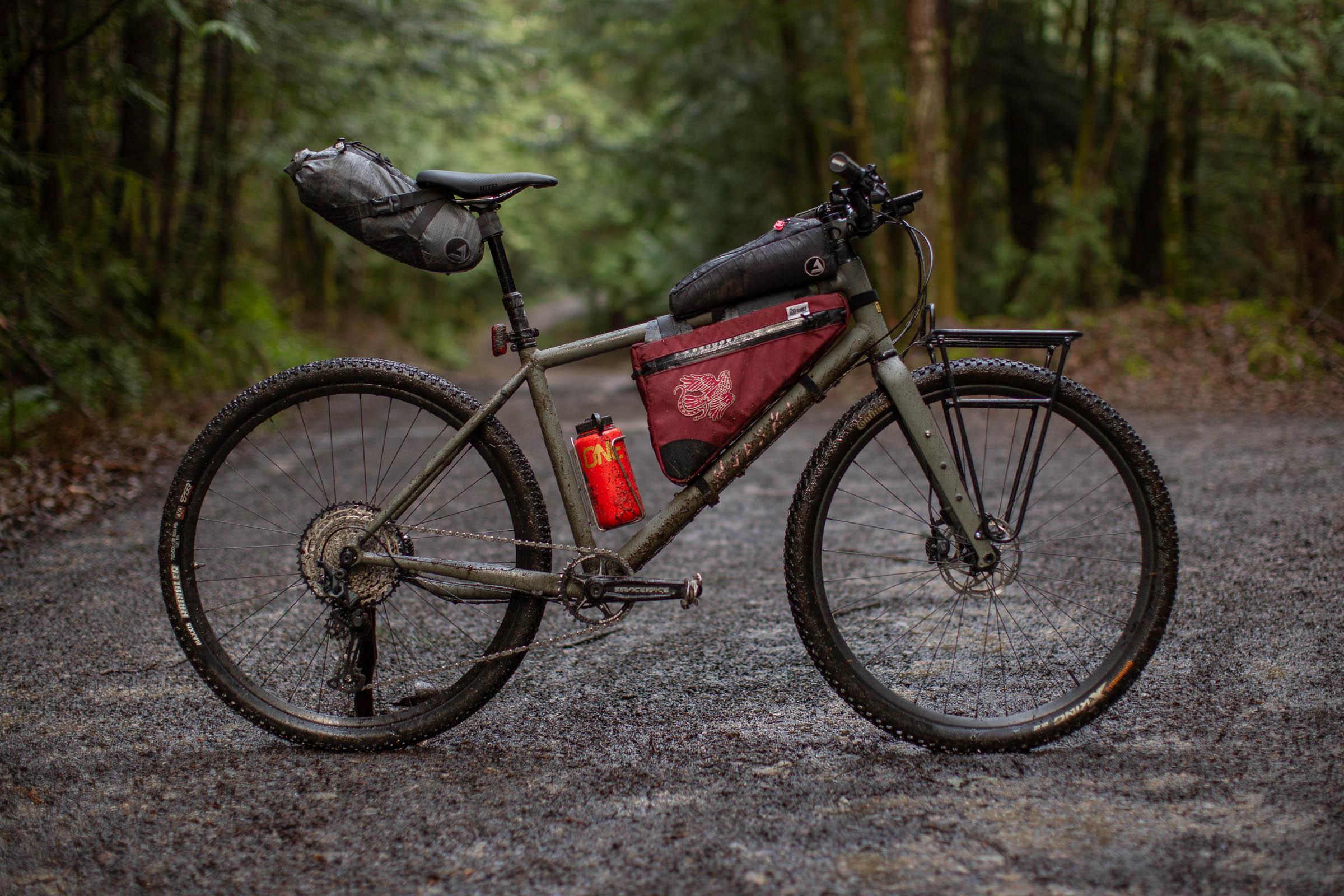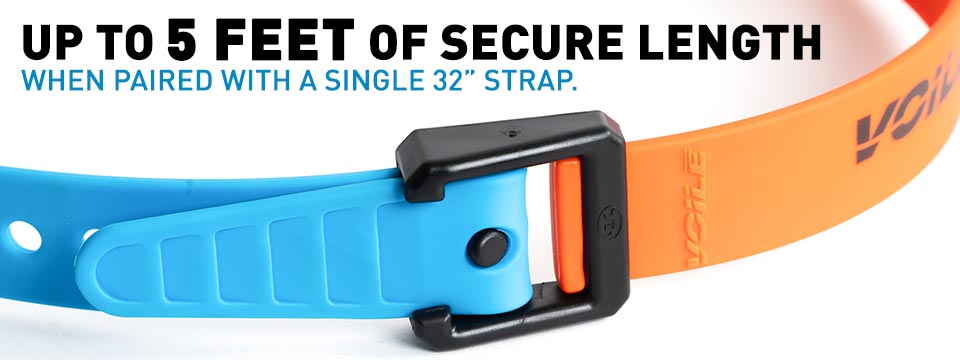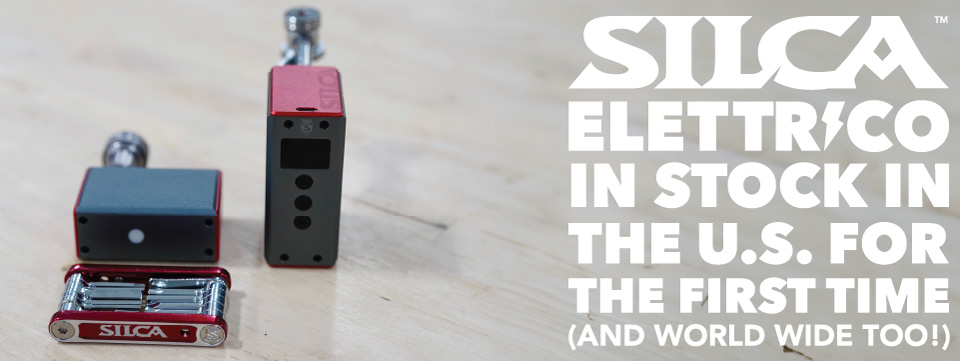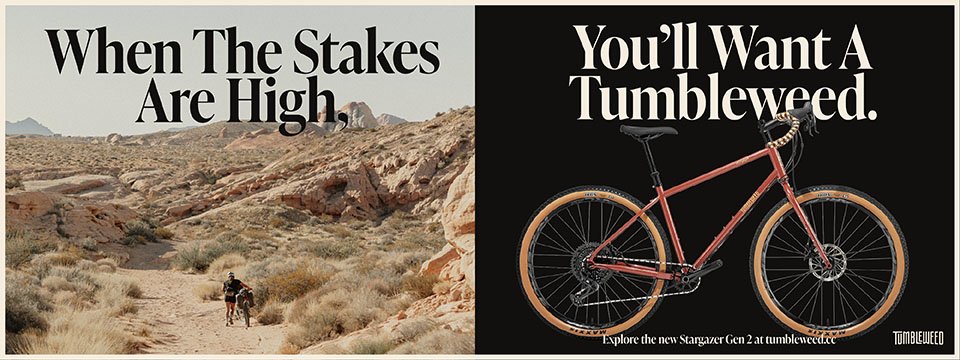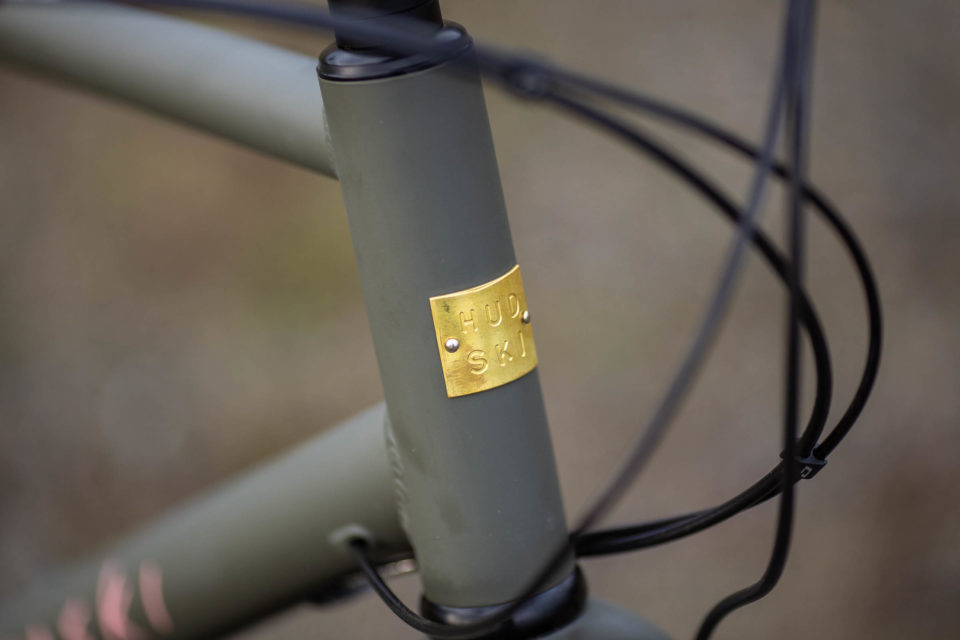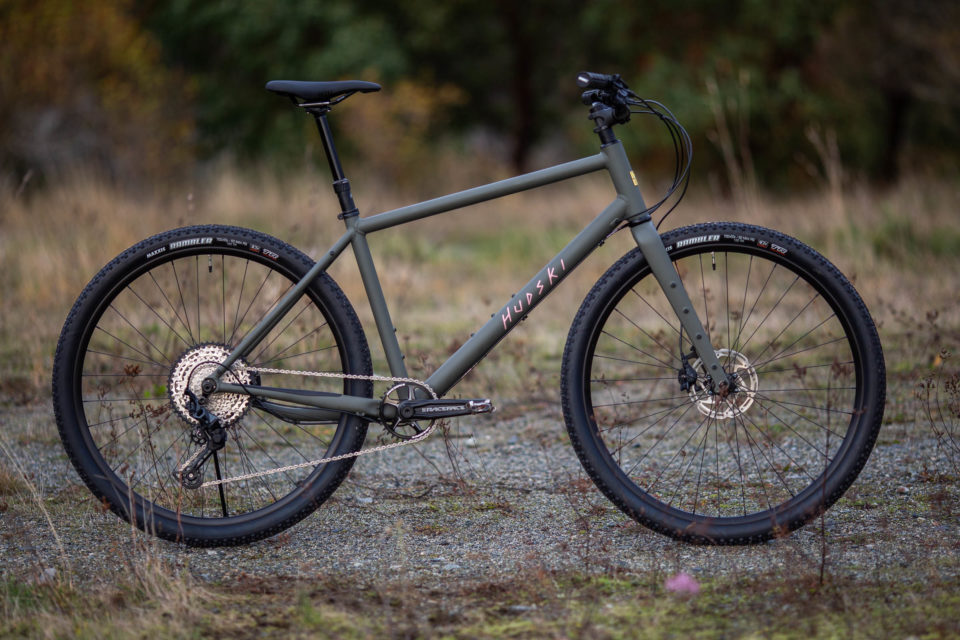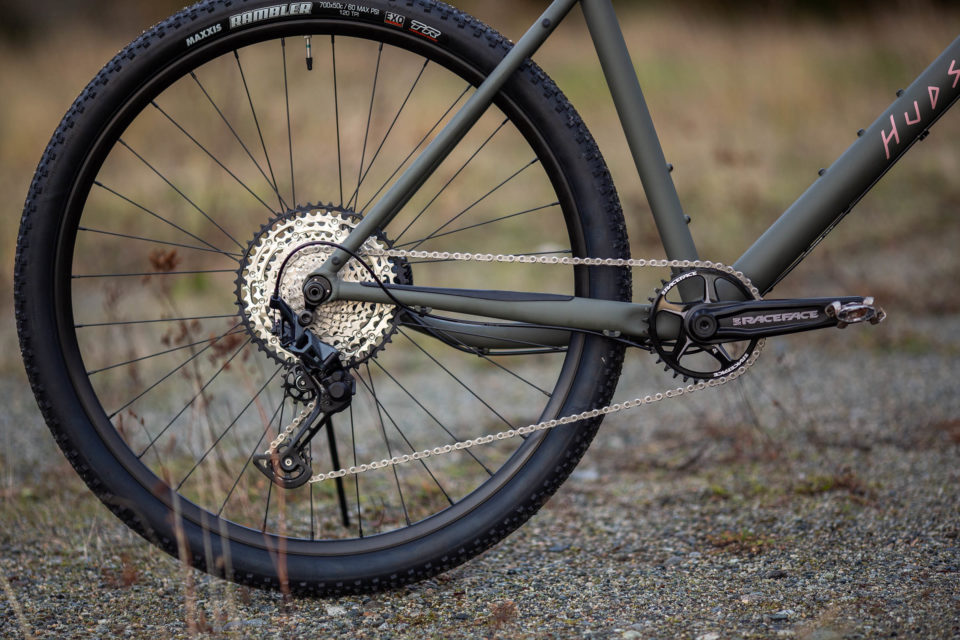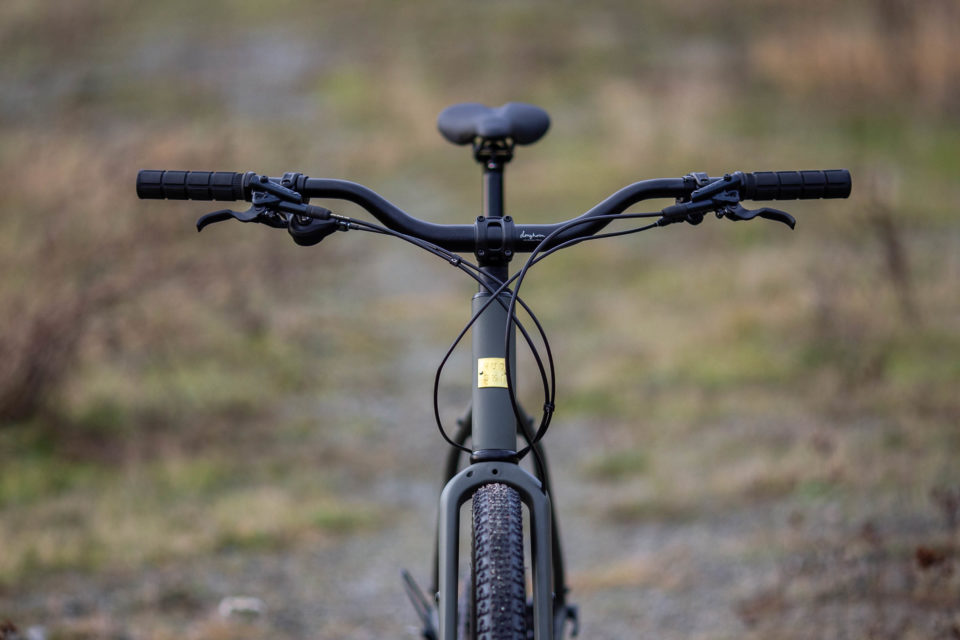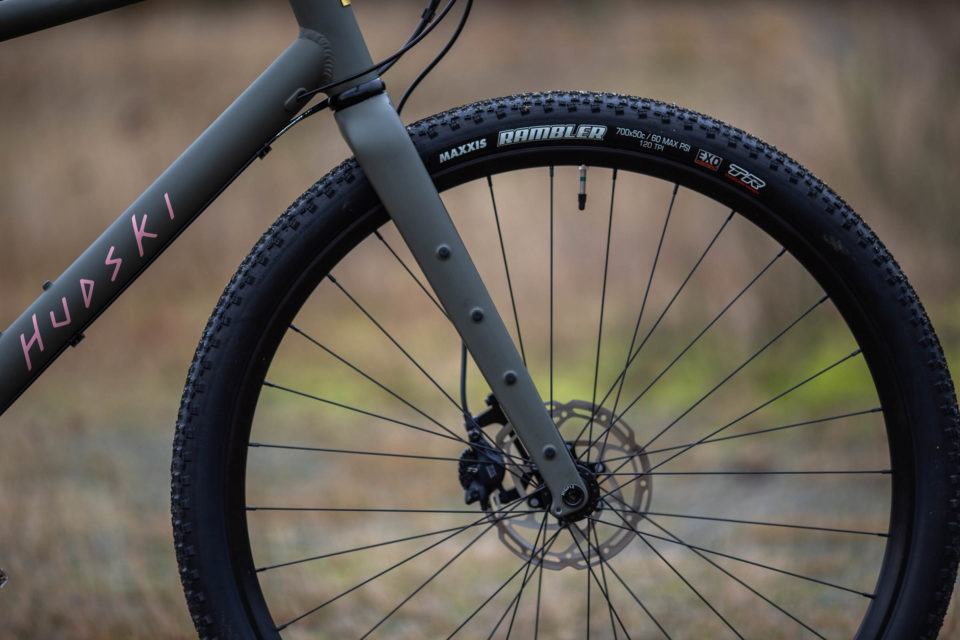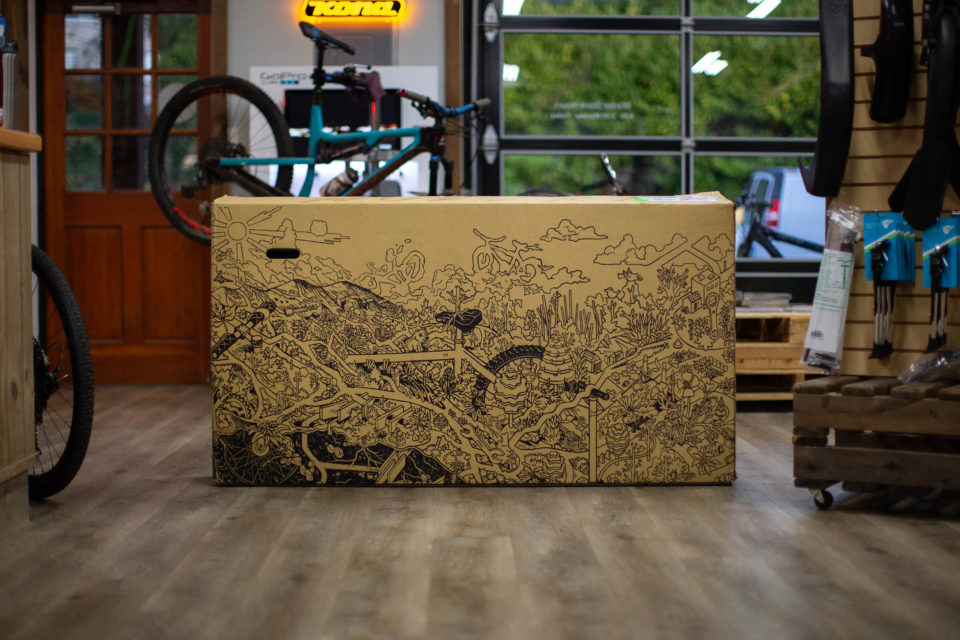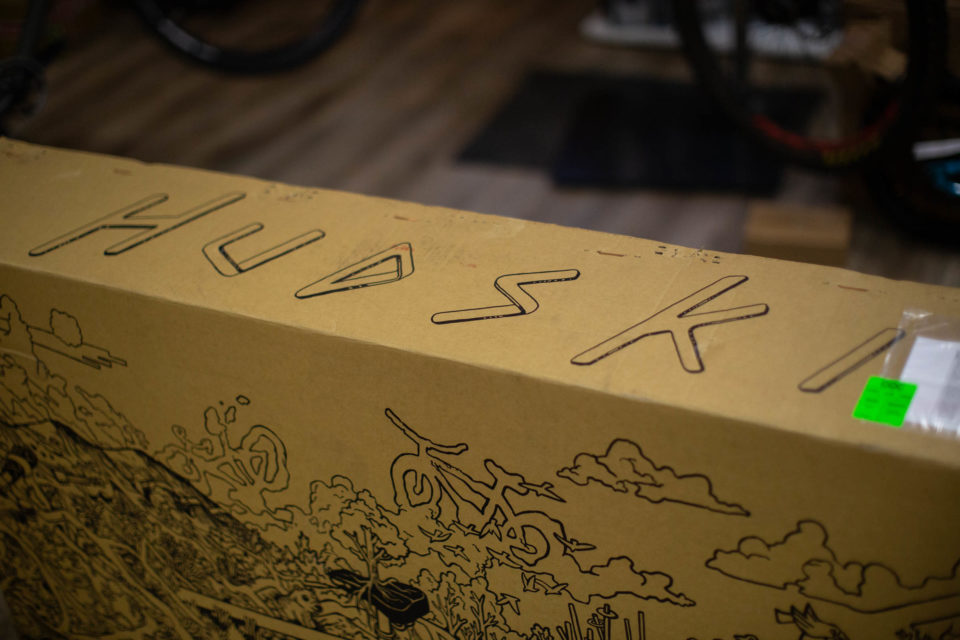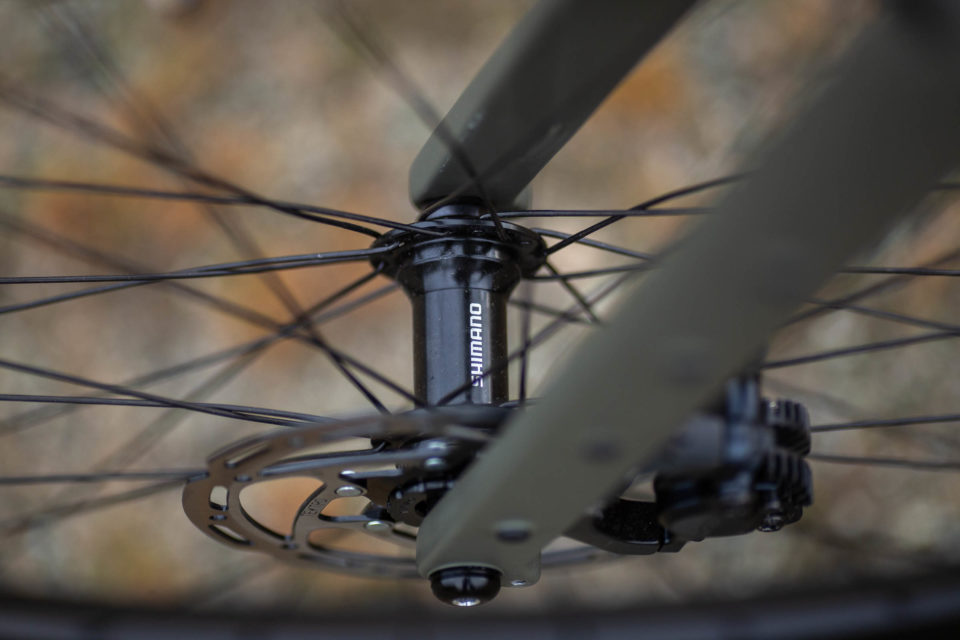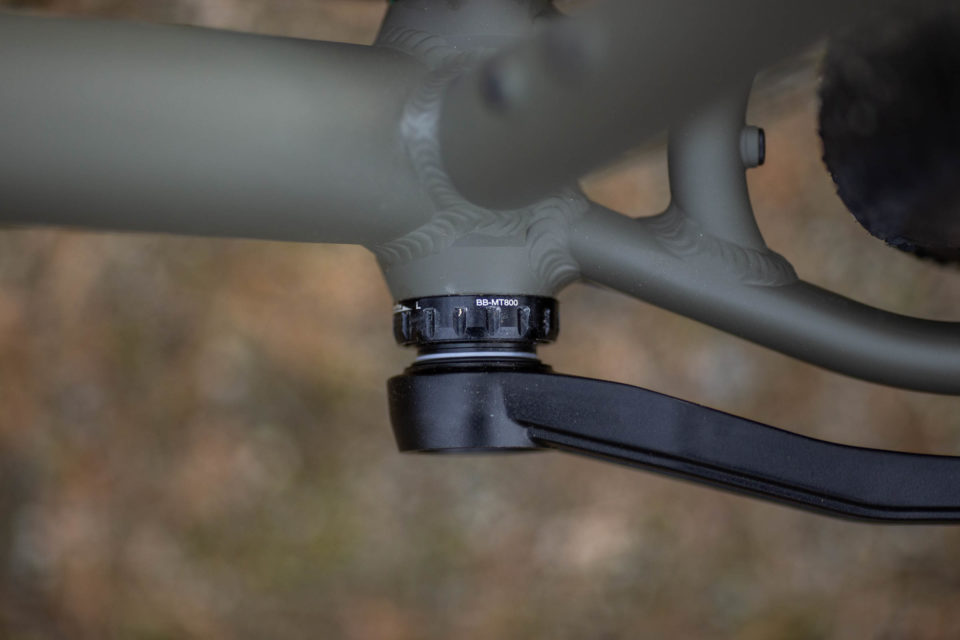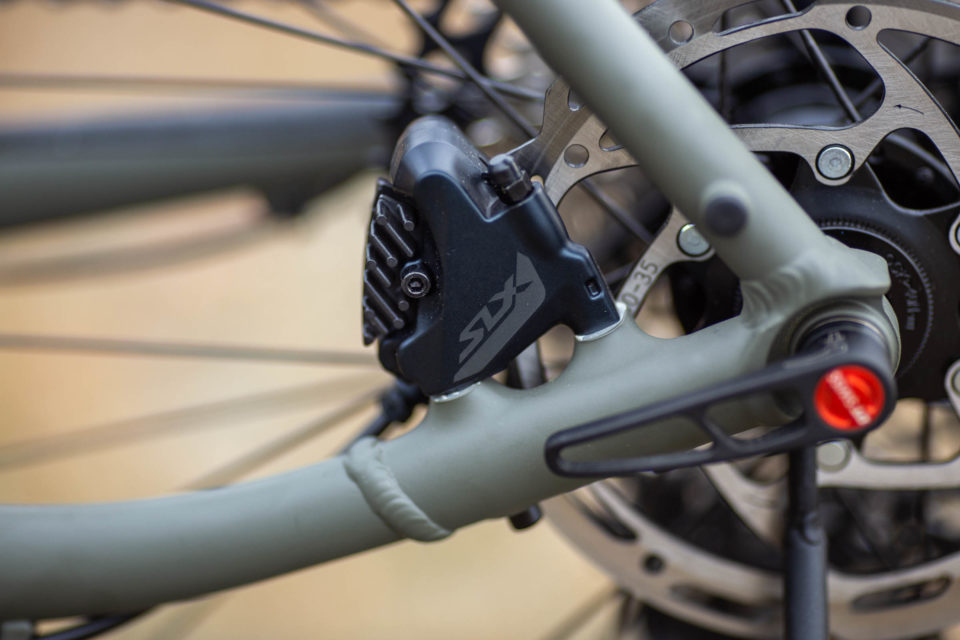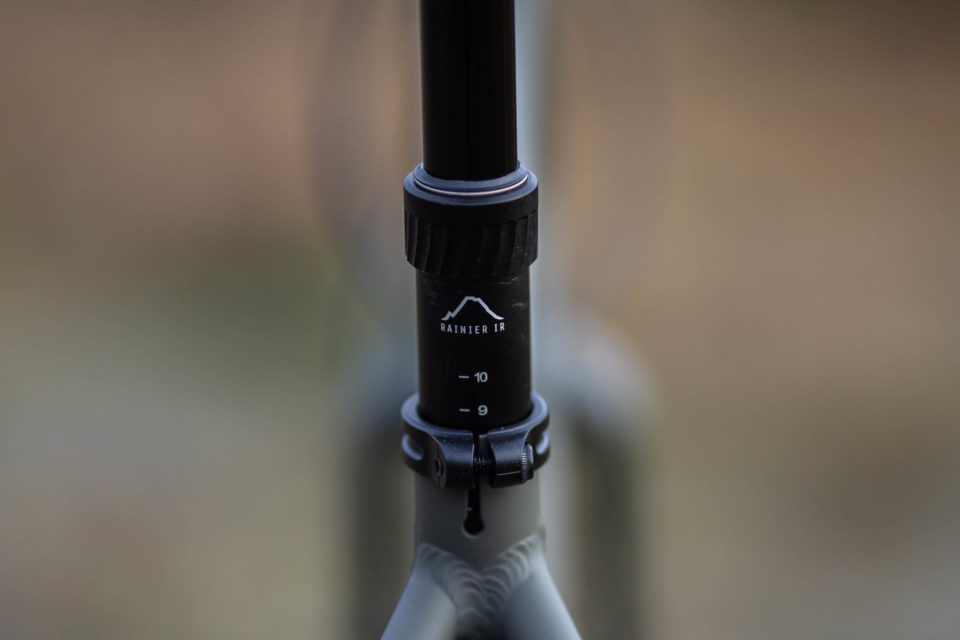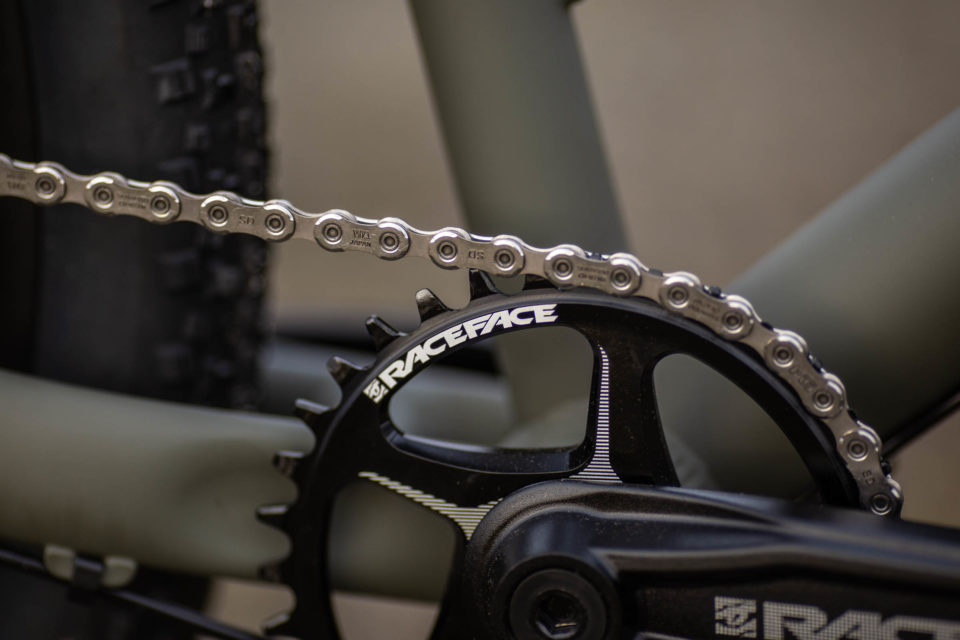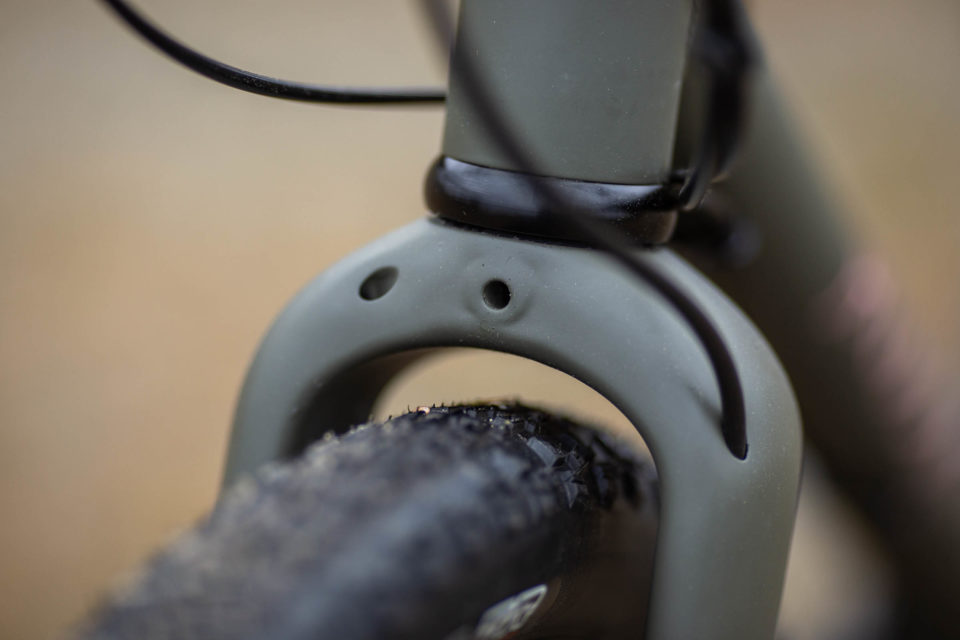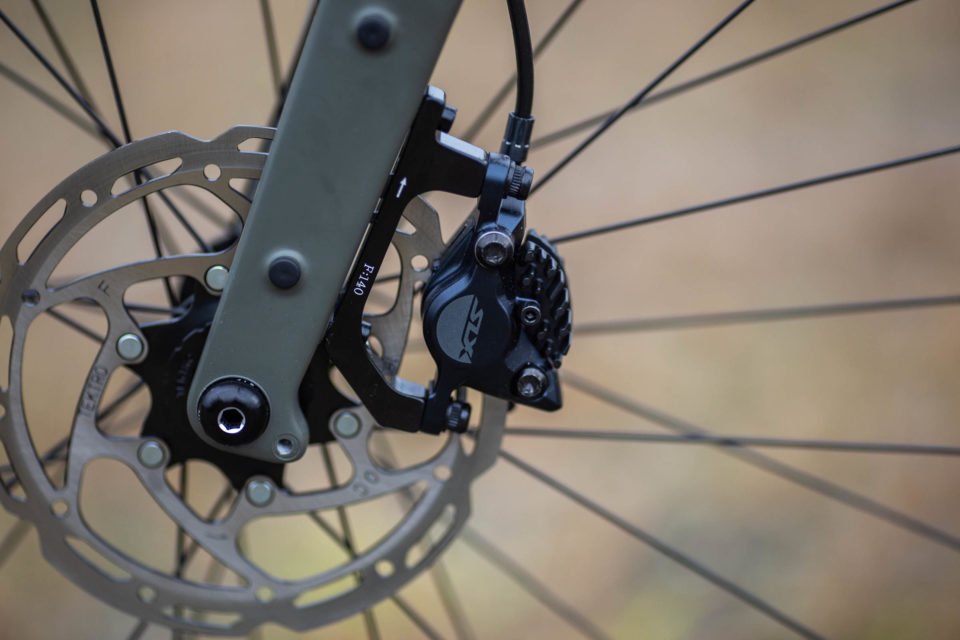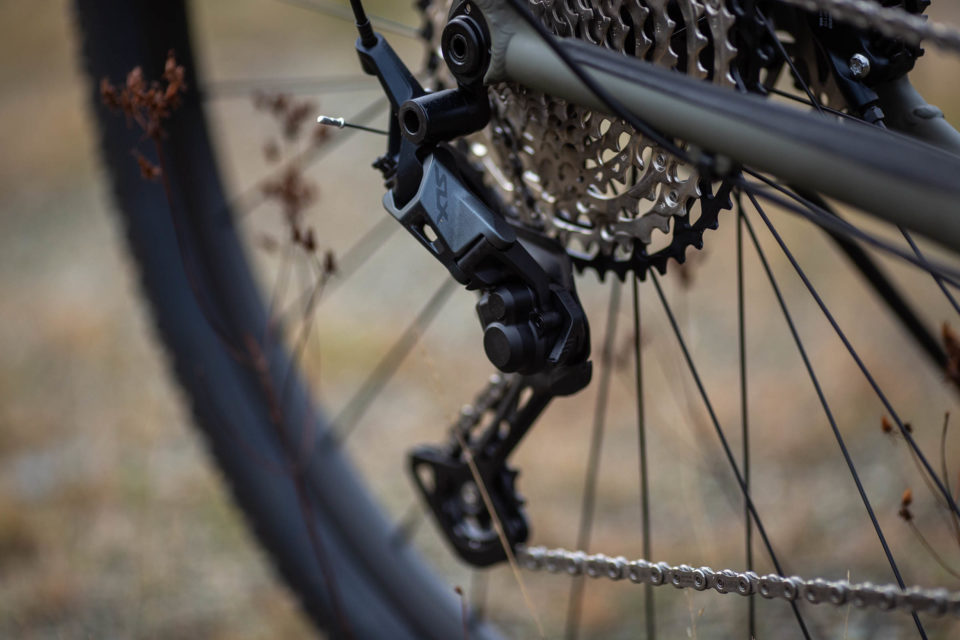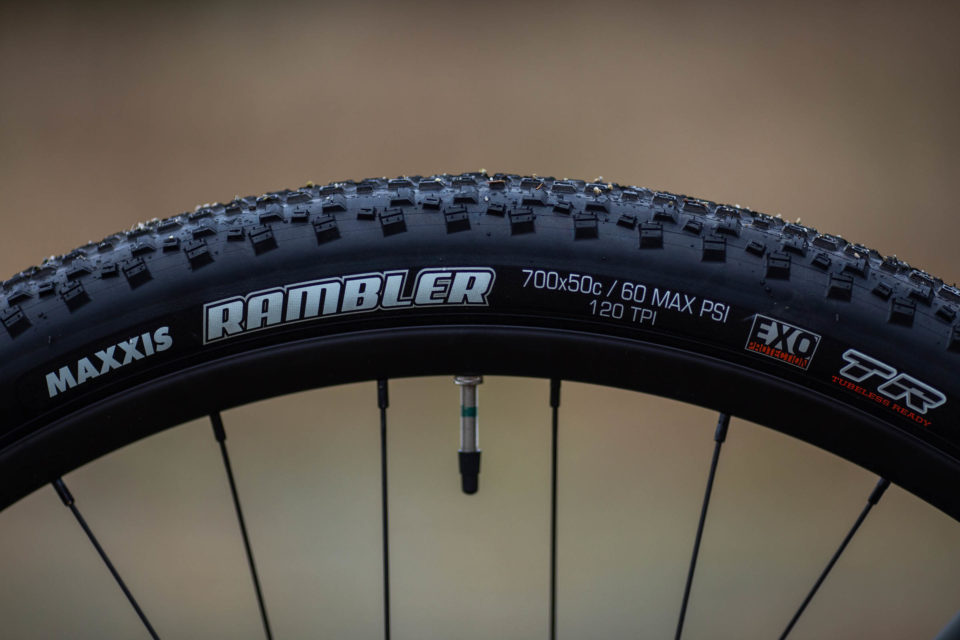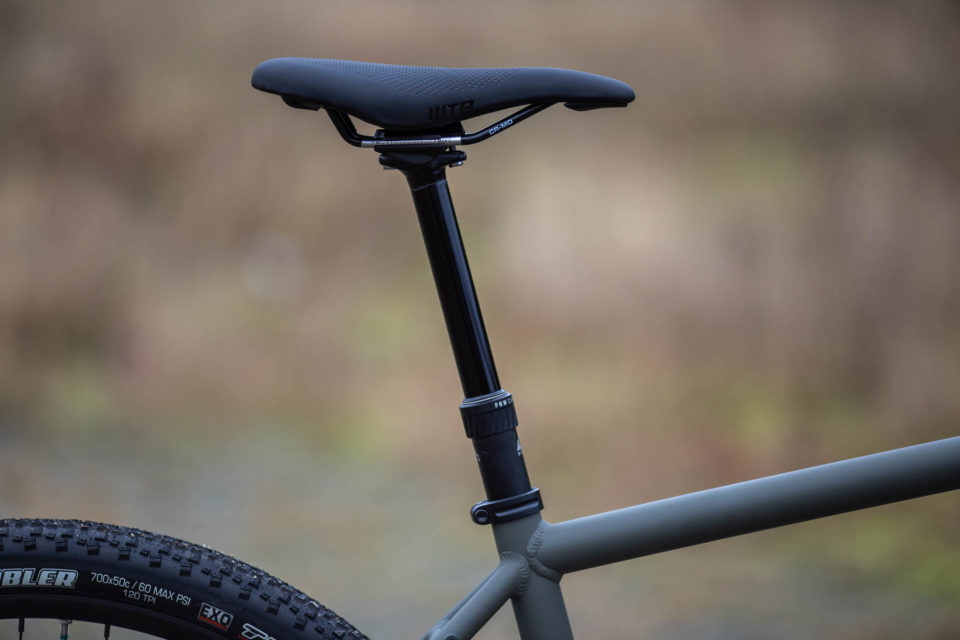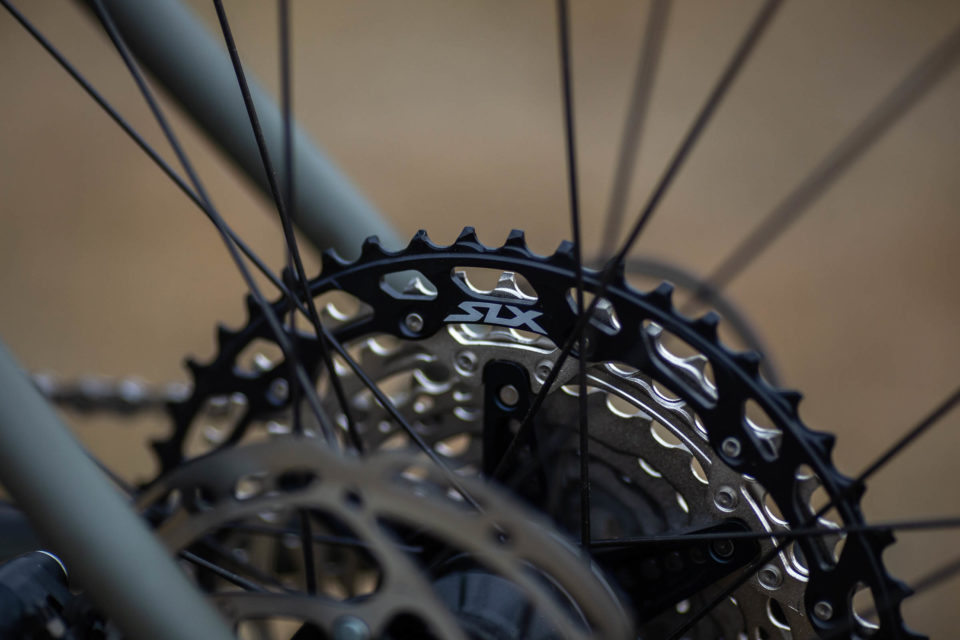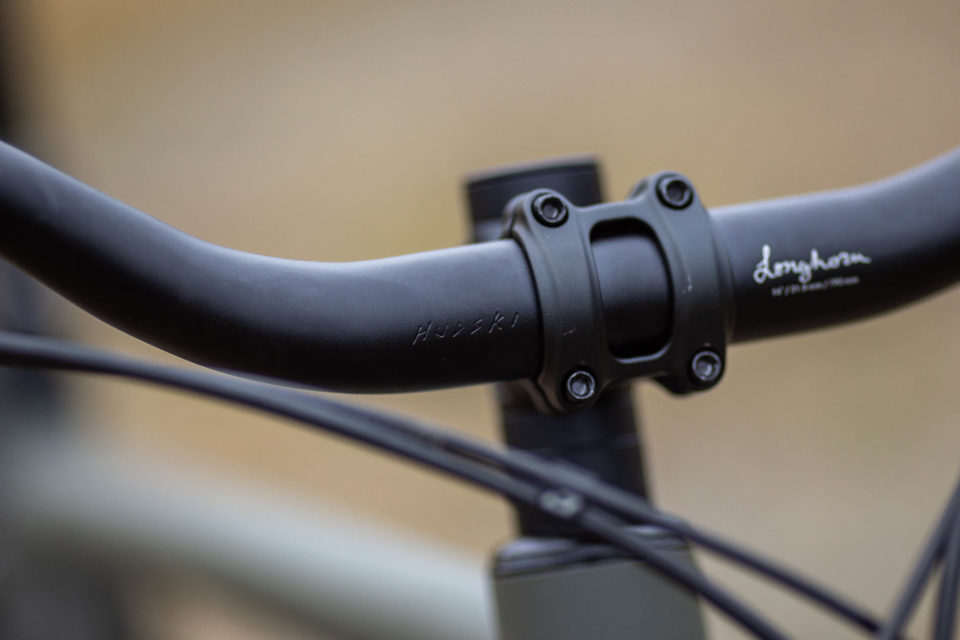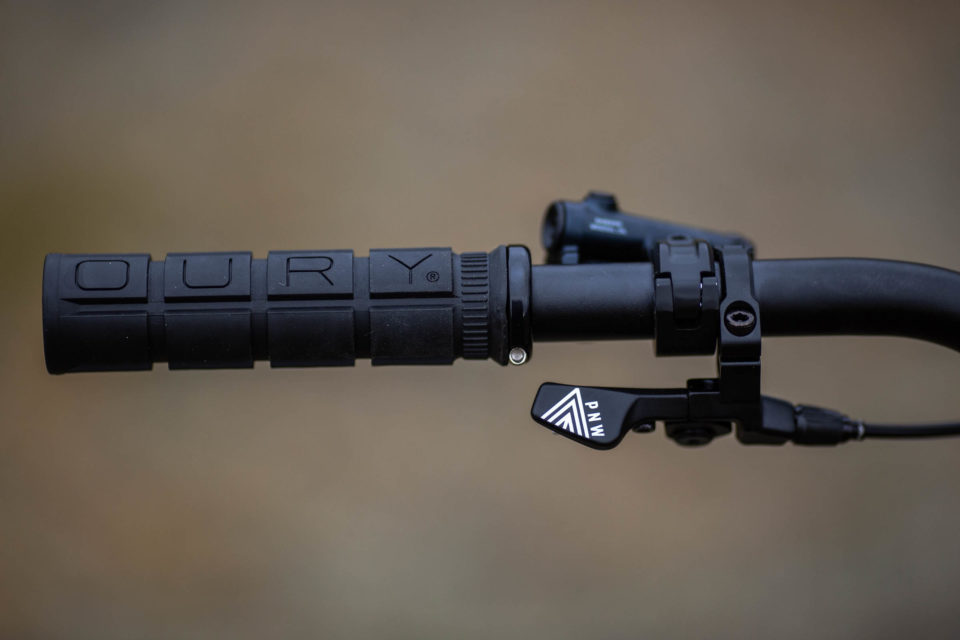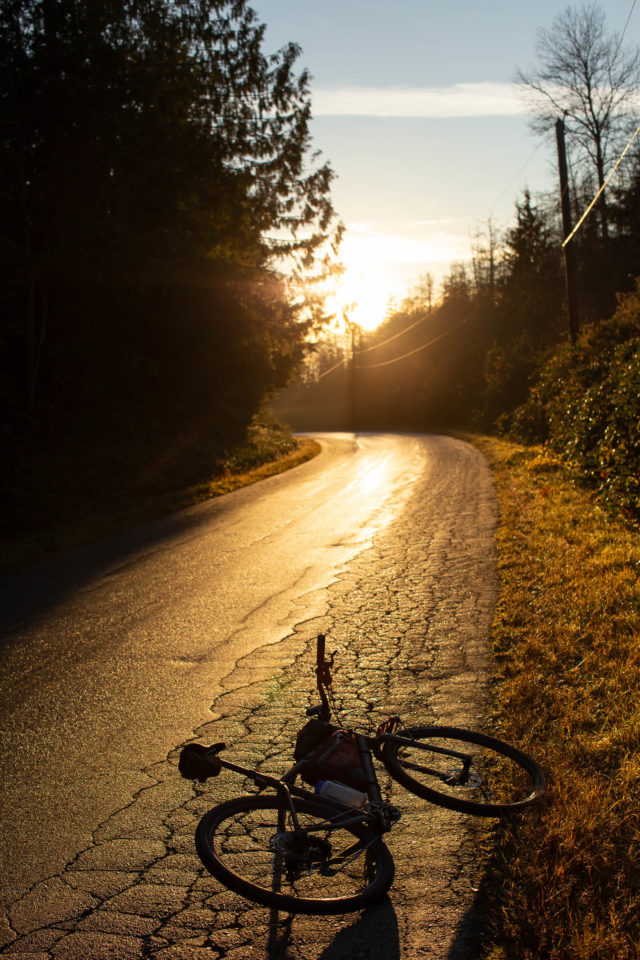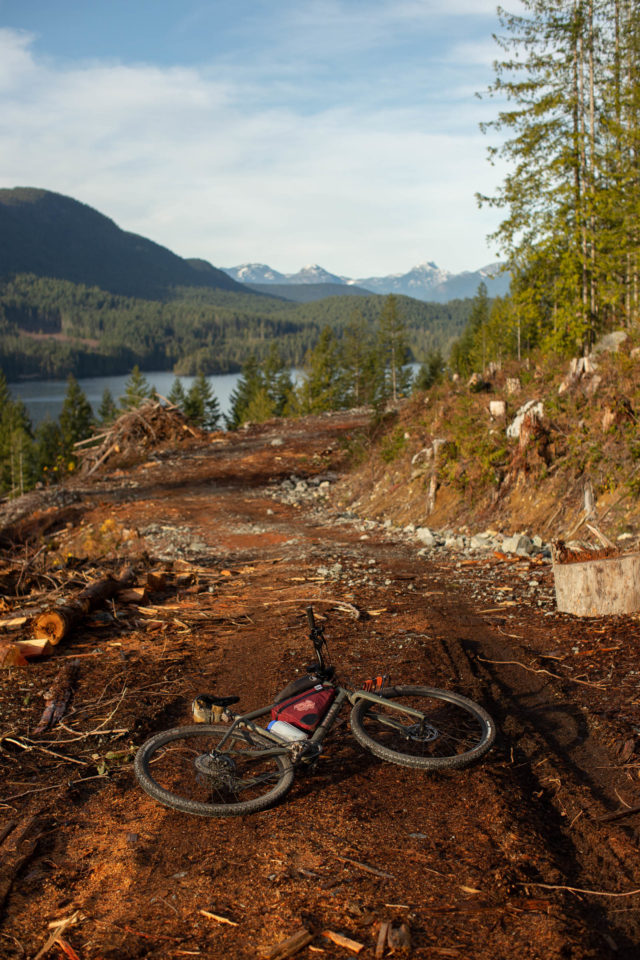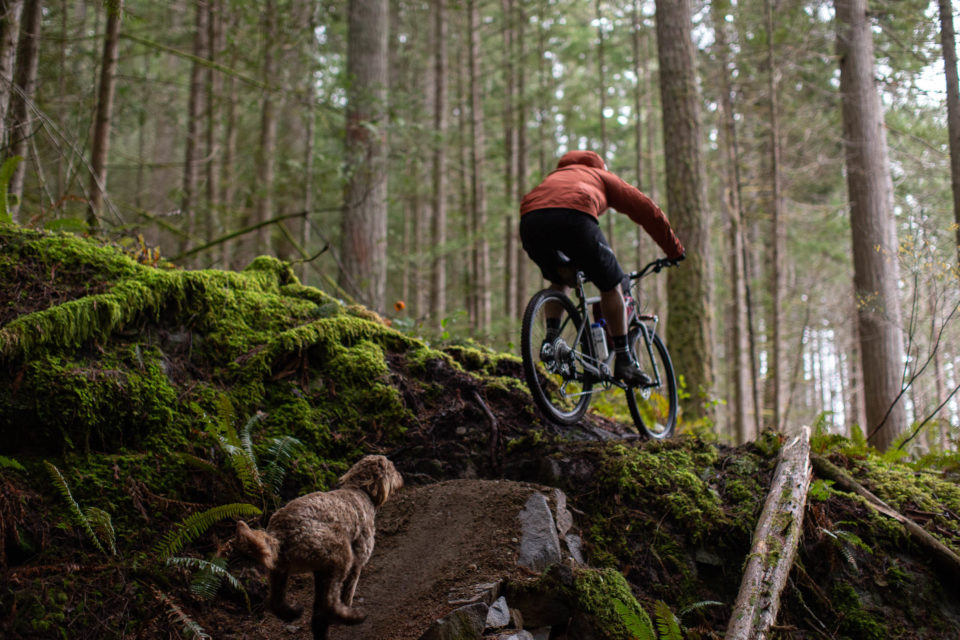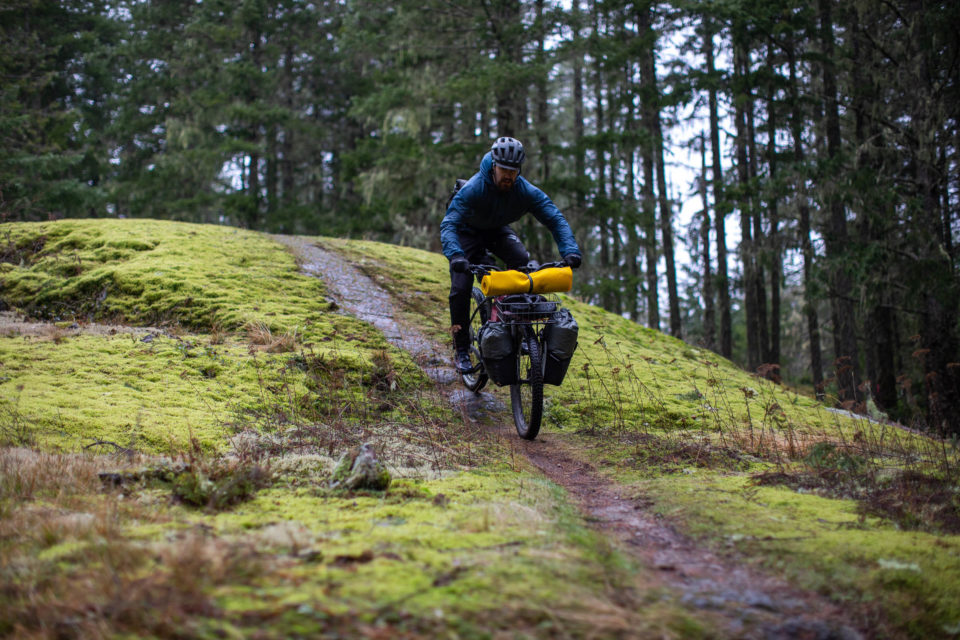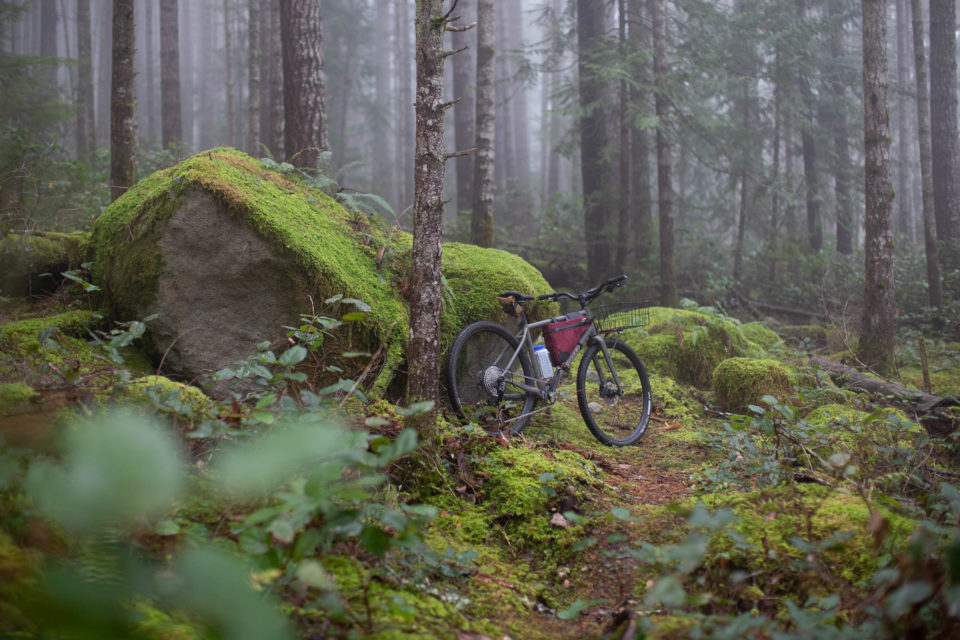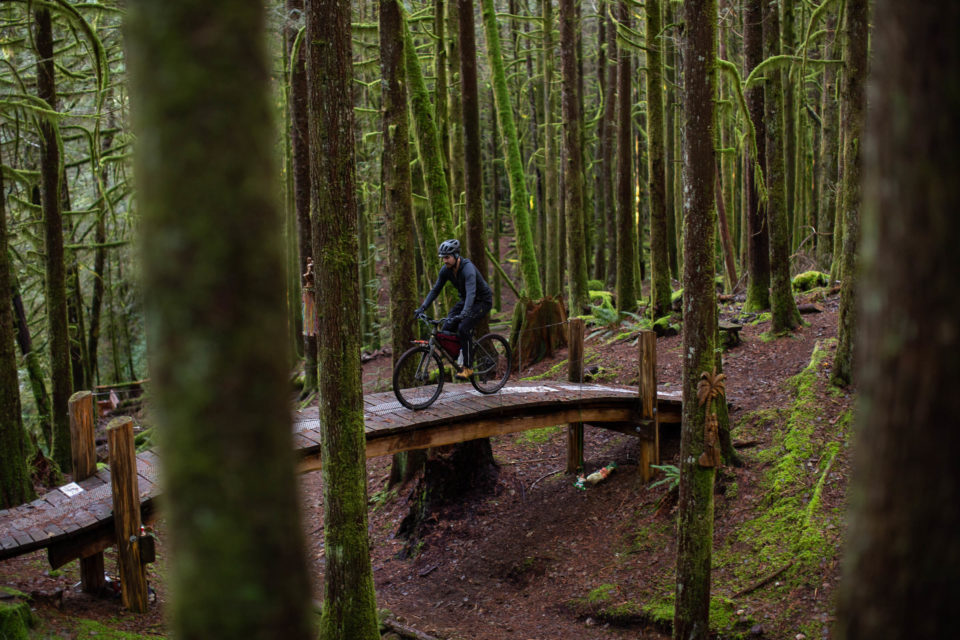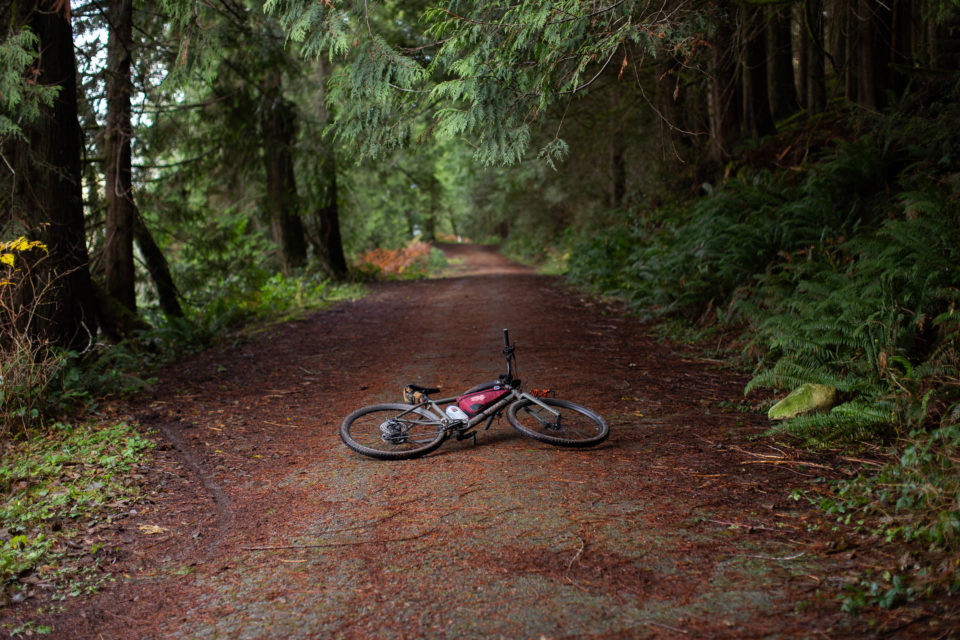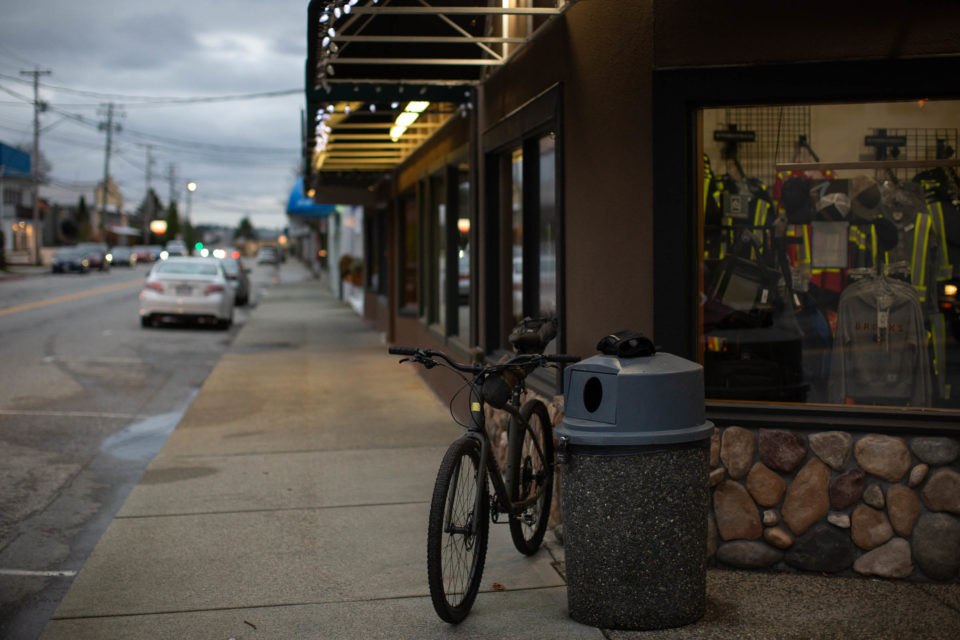Hudski Doggler Review: The Kids are All Right
The Hudski Doggler is a do-everything bike that’s offered in three builds: Gravel, Mountain, and City, each with a $2,000 price tag and a well-rounded component group. We tested the Doggler in Gravel and Mountain mode to find out what it’s capable of. After riding one for a few months and swapping between 700c x 50mm and 27.5 x 2.6” tires, here’s our full review…
PUBLISHED Jan 20, 2021
The Hudksi Doggler immediately caught my attention when it was announced back in September. With little else to go on than a quick product launch video and a few photos, my imagination started running wild with ideas about what the Doggler could do. I’ve been pretty hooked on the idea of flat bar gravel bikes for a while now, an obsession that’s only been amplified during all the time I’ve spent testing and reviewing the more common (and sought after) drop-bar equivalent. My Trek 520 flat-bar conversion subdued my desires temporarily, but I wanted more. There was so much about that bike that I liked, but a handful of frame limitations and design choices meant it was far from perfect.
The Hudski Doggler is a modern, category-bending rigid bike that’s offered in three different builds: city, gravel, and mountain. Each model has the same aluminum frame and full-carbon fork, a 1×12 drivetrain, hydraulic brakes, and a dropper post. The only components that differ between the builds are the tire (and wheel) size and handlebars. The frame has clearance for 29 x 2.25” or 27.5 x 2.6” tires, a replaceable derailleur hanger, threaded bottom bracket, and thru-axle hub spacing (12x142mm / 15x100mm). There are triple mounts on the top and bottom of the downtube, a standard seat tube bottle mount, as well as anything cage mounts on the fork legs. It has fender mounts, rear rack mounts, and a lower fork mount for additional front rack compatibility—it’s got a lot of tiny threaded holes in it. While the cables are mostly externally routed, other than the front brake, which hides in the fork leg, the PNW Rainier dropper post that’s specced on all models is internally routed.
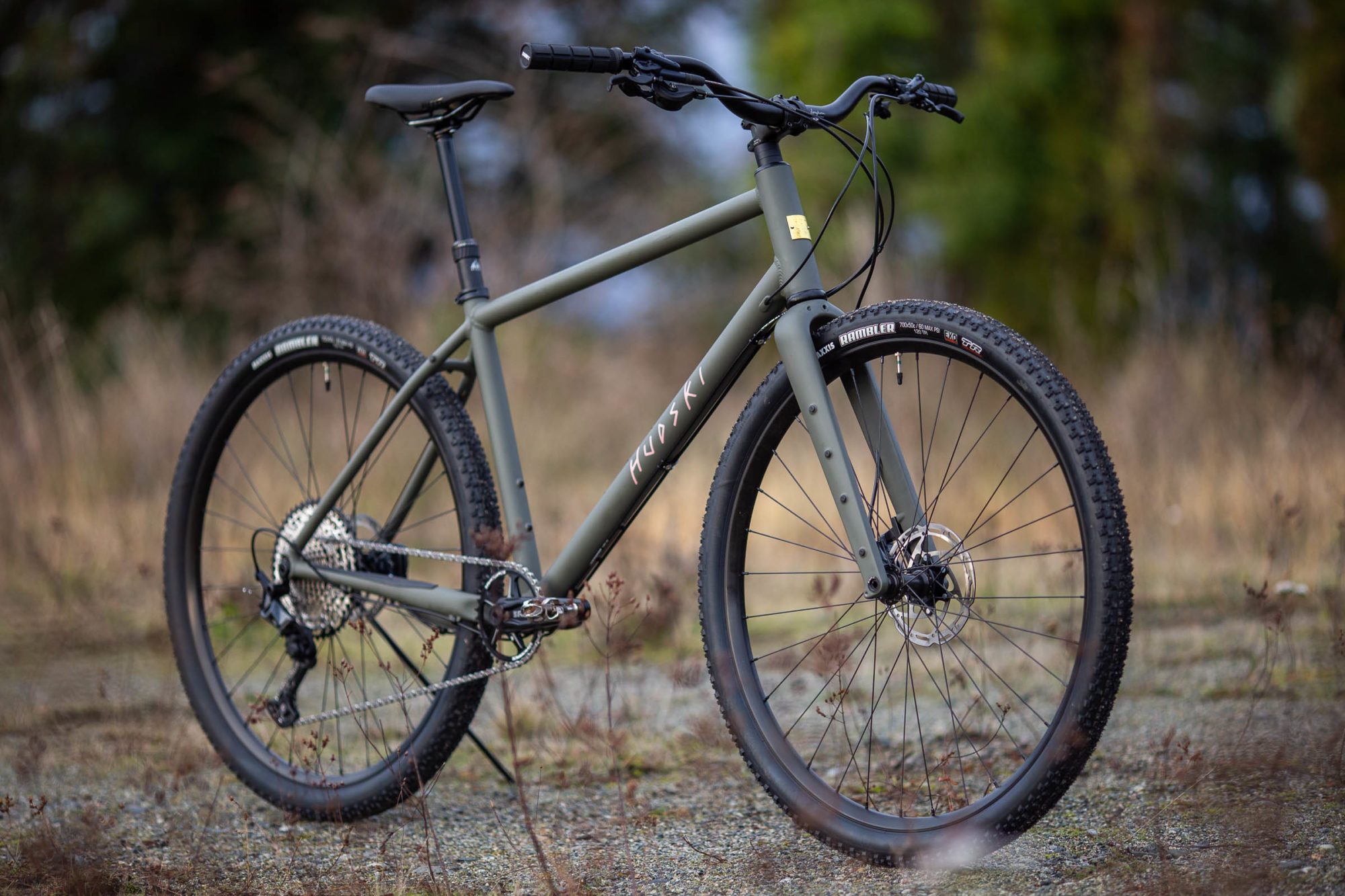
Hudski sent over a Hudski Gravel build in Olive Rose for me to test out, which I think is the most versatile option for everything but the chunkiest singletrack. After my first few rides, I thought it would make for a more thorough review if I had the chance to ride it with 27.5 x 2.6″ tires as well, and thankfully Hudski agreed and sent a wheelset over. They also included a prototype front rack designed for the Doggler, which ended up seeing quite a lot of use.
What I was most curious to confirm was if the Doggler had as much potential as I imagined when I first saw it. The component selection had my vote and the bike was aesthetically pleasing and unique enough to hold my attention, but would it be suitable for commuting, gravel rides, and mountain biking like Hudski claims? Or is the Doggler simply an expensive hybrid that’s easy on the eyes? I made it my mission to find out.
Background & First Impressions
Hudski was co-founded by Brian Szykowny and Will Hudson. Brian worked at Specialized for nearly four years as an industrial designer, where he designed saddles, components, and eventually frames. He has spent time in the paint booth, working with custom bike builders, and spent a few years racing road bikes before he landed on Hudski. Will studied ceramics and product design in school and quickly moved through different facets of making things following school, working for woodworkers, ceramicists, and designers while rally racing with Brian. Before launching Hudski, Brian and Will created light fixtures and did interior design projects, but had been kicking the idea of bringing lightweight bicycle technology into the commuter bike realm.
“Hudski” is a combination of the two founders last names. The Doggler was designed from the ground up, first as a city/hybrid design but it slowly morphed into a capable sport utility ripper. Some of their biggest geometry inspiration came from vintage American bikes, including the Schwinn Spitfire Brian has had for a decade. They both enjoyed the relaxed geometry and “rideability” of the two Schwinn bikes so they started there, reverse engineered that geo, threw in a modern understanding of long-reach bikes, and kept pushing the numbers until they felt like the shred matched the chill.
I was pleasantly surprised to see the Doggler arrive in a bike box covered in artwork. For a startup’s first bike, these little details are important and well-received, especially since a local family got to take the box home and colour it in. Jealous! Since the Doggler is exclusively sold directly through Hudski, the box comes with all of the tools needed to assemble the bike, the rims are taped and ready for a tubeless setup, and two tubeless valves and end-caps for the fork are included. The bike comes 90% assembled, including the dropper post completely installed, which was a nice touch. For those comfortable turning the bars, installing the front wheel, and checking brakes and shifting, it’s a quick and easy process. For those not comfortable doing this, a quick stop at your local bike shop will have it up and running in no time.
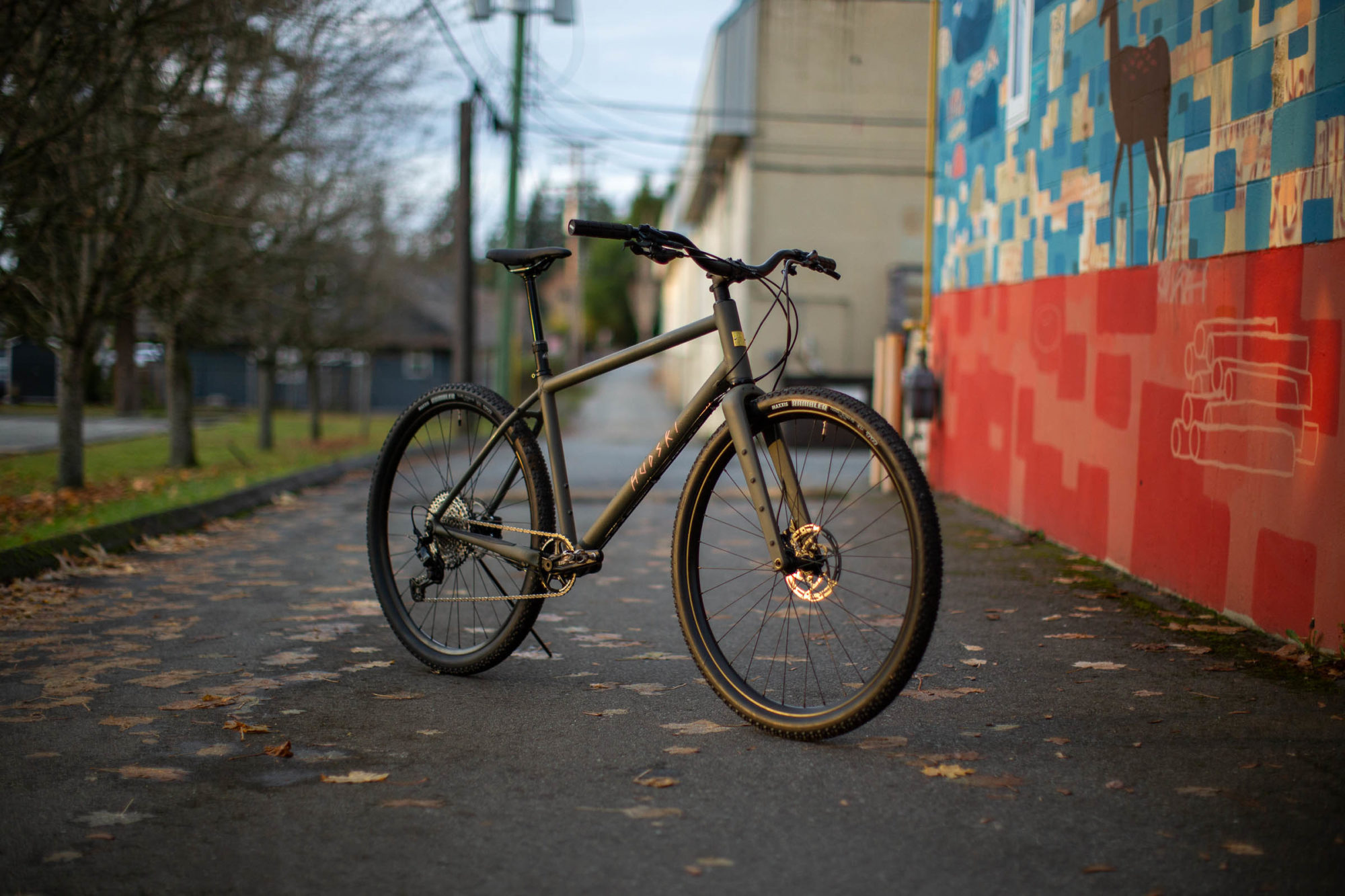
- Highlights (Large)
- Angles: 69.2° Headtube, 73.2° Seattube
- Chainstay: 450mm
- Bottom Bracket: 73mm Threaded
- Hub specs: 142×12 (rear); 100×15 (front)
- Seatpost Diameter: 31.6m
- Max Tire Size: 27.5 x 2.6” / 29 x 2.25″
- Price: $2,000
The Doggler is an aesthetically pleasing bike, and I think their paint jobs are really eye-catching. All of the welds, mounting points, curves, and finishings appear to be top-notch. The mountain and gravel builds come with Hudski’s very own riser bar, which features a 16° sweep and 70mm rise. The city build, on the other hand, comes with a more relaxed 27° swept-back bar for a more upright riding position.
The Doggler weighs just over 25 pounds with pedals installed, which translates into an easy and responsive ride quality, while also making everyday tasks like picking it up and walking up stairs that much easier. The fit also hit a sweet spot for me. The large I rode put me into a comfortable upright position that, paired with wide bars and a short stem, doesn’t feel twitchy or out of place on gravel or dirt. For a slightly longer fit, or those with long torsos or arms, sizing up could be a good option, although I was quite happy on the large at 6’1” with fairly standard proportions. Far from aggressive, the more comfort-focused fit isn’t for everyone, and it took a little getting used to before I found my groove.
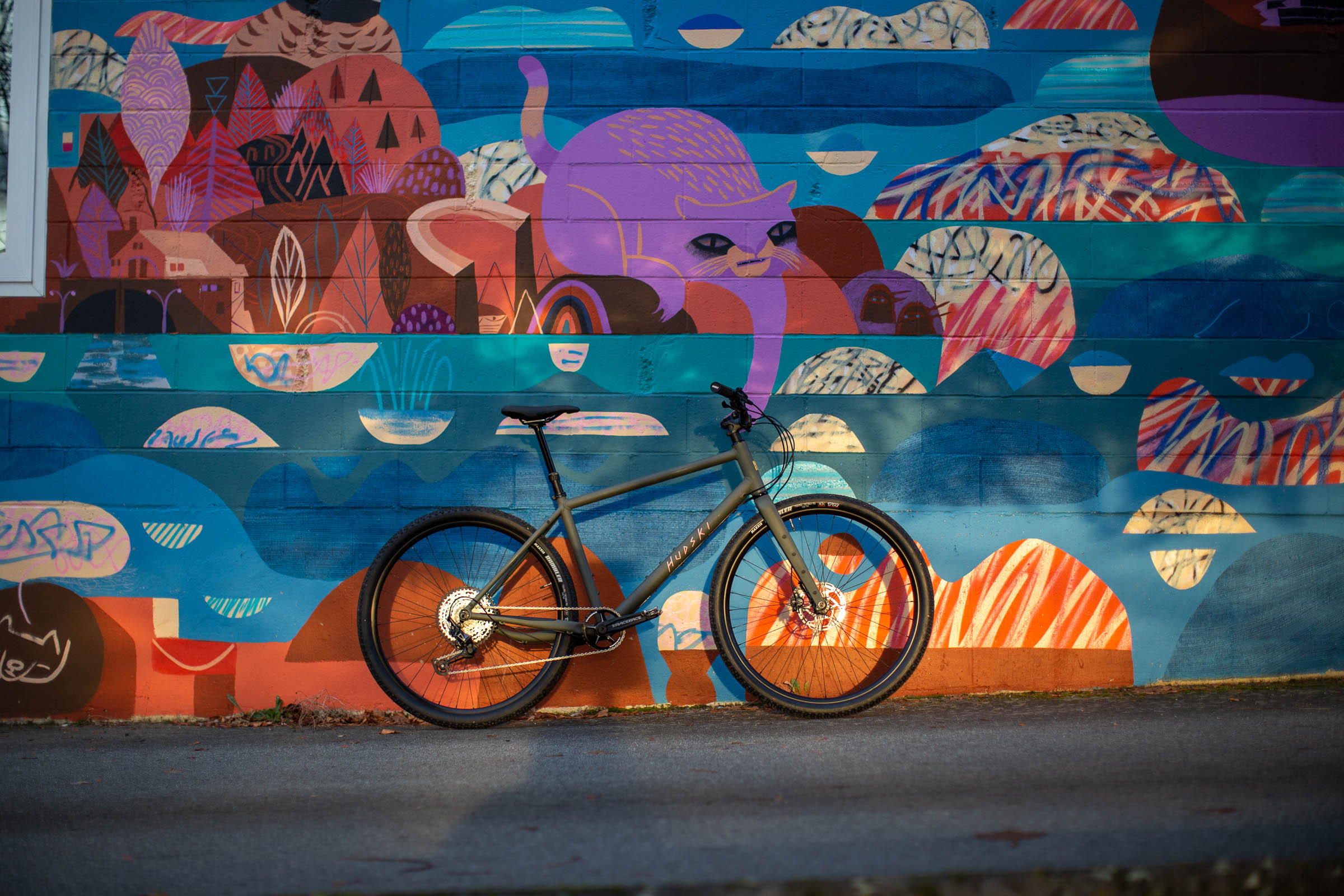
Hudski Doggler Build Kit
Beyond the care-free branding and nice paint jobs, the Doggler’s build kit is very well-rounded. It’s great to see a new brand using some of the latest and greatest components, taking advantage of modern specs that make so much sense for a bike claiming this much versatility. As I mentioned above, the three different Doggler builds all feature the same base spec, except for the rims, tires, and handlebars. The City Doggler comes with the same 25mm internal width rims as the Gravel Doggler, but with faster rolling Maxxis Grifter 29 x 2.0″ tires and the more swept back Hudski Longhorn 27 handlebar. The Mountain Doggler has 30mm internal width rims, Maxxis Rekon EXO 27.5 x 2.6″ tires, and the same Hudski Longhorn 16 handlebars as the Gravel Doggler. In my mind, the Gravel Doggler I tested is the perfect blend of both. I was incredibly impressed with the build as a whole.
Little features like a Shimano XT bottom bracket instead of more economical options, paired with some trusty Race Face cranks, had me convinced that Hudski put some serious thought into the parts they used. Being an admirer of Shimano 12-speed drivetrains, the more affordable SLX level components functioned well and are quite hard to discern from the higher-end stuff. The Hudski Longhorn 16 bar is one of the first riser bars I’ve used, and I’m a fan. It’s comfortable when I’m cruising around town but its 780mm width (can be trimmed if needed) makes it feels equally suitable for riding gravel and singletrack. Check out the complete build kit below.
Build Kit
- Frame Doggler Alloy
- Color Olive Rose
- Sizes S, M, L, XL
- Fork Hudski Full Carbon
- Headset Sealed cartridge bearing, 1.125 ZS upper, 1.5 EC lower
- Bottom Bracket Shimano XT, 73mm Threaded
- Crankset Raceface Ride, Alloy 34T
- Cassette Shimano SLX 10-51T
- Rear Derailleur Shimano SLX
- Shifter Shimano SLX, 12-Speed
- Dropper Lever PNW Puget MTB Lever
- Chain Shimano SLX
- Brakes Shimano SLX
- Rotors Tektro 160mm centerlock
- Front Hub Shimano 15x100mm
- Rear Hub Shimano 12x142mm
- Rims 700c Jalco i25
- Spokes Double Butted
- Front Tire Maxxis Rambler EXO 700x50mm
- Rear Tire Maxxis Rambler EXO 700x50mm
- Handlebar Hudski Longhorn 16
- Grips Oury V2 lock-on
- Stem Hudski Longhorn
- Seatpost PNW Rainer
- Saddle WTB Deva
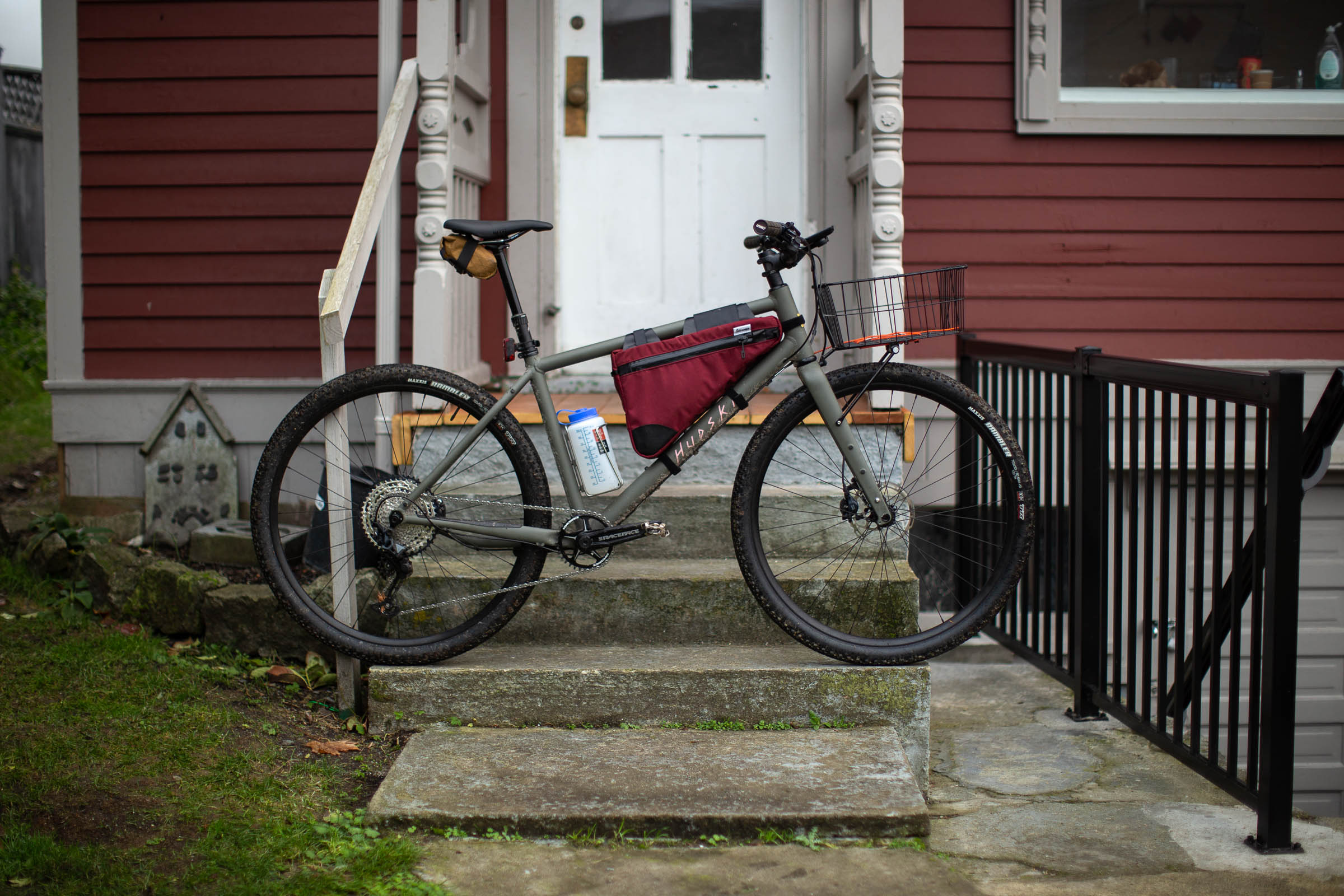
Doggler as a city bike
My first ride on the Doggler was a two-hour road ride around town. I strategically downloaded two episodes of the This American Life podcast, didn’t bring much else with me, and took off along a loop trafficked by vehicles and the occasional road rider. I kept to the pavement, seeking out bike lanes and paths when possible. The wide riser bar and fairly large tires, although not the most aerodynamic pairing, were a pleasure in these conditions. I didn’t need to watch out for potholes but was buzzing along the roads at a decent speed. The upright position meant my head was up, making it easy to watch for cars, pedestrians, and new lanes to check out.
For those interested in a commuting bike, the numerous mounting options would make it a cinch to run full fenders, racks, or even a dynamo hub for some reliable lighting options. Its lightweight frame and modern, reliable components are far beyond what most hybrid mountain bikes or commuters offer. Although the 1×12 drivetrain and hydraulic brakes could be seen as overkill for city riding, I’m pretty sure most Doggler owners will find themselves wanting to push far beyond the city limits.
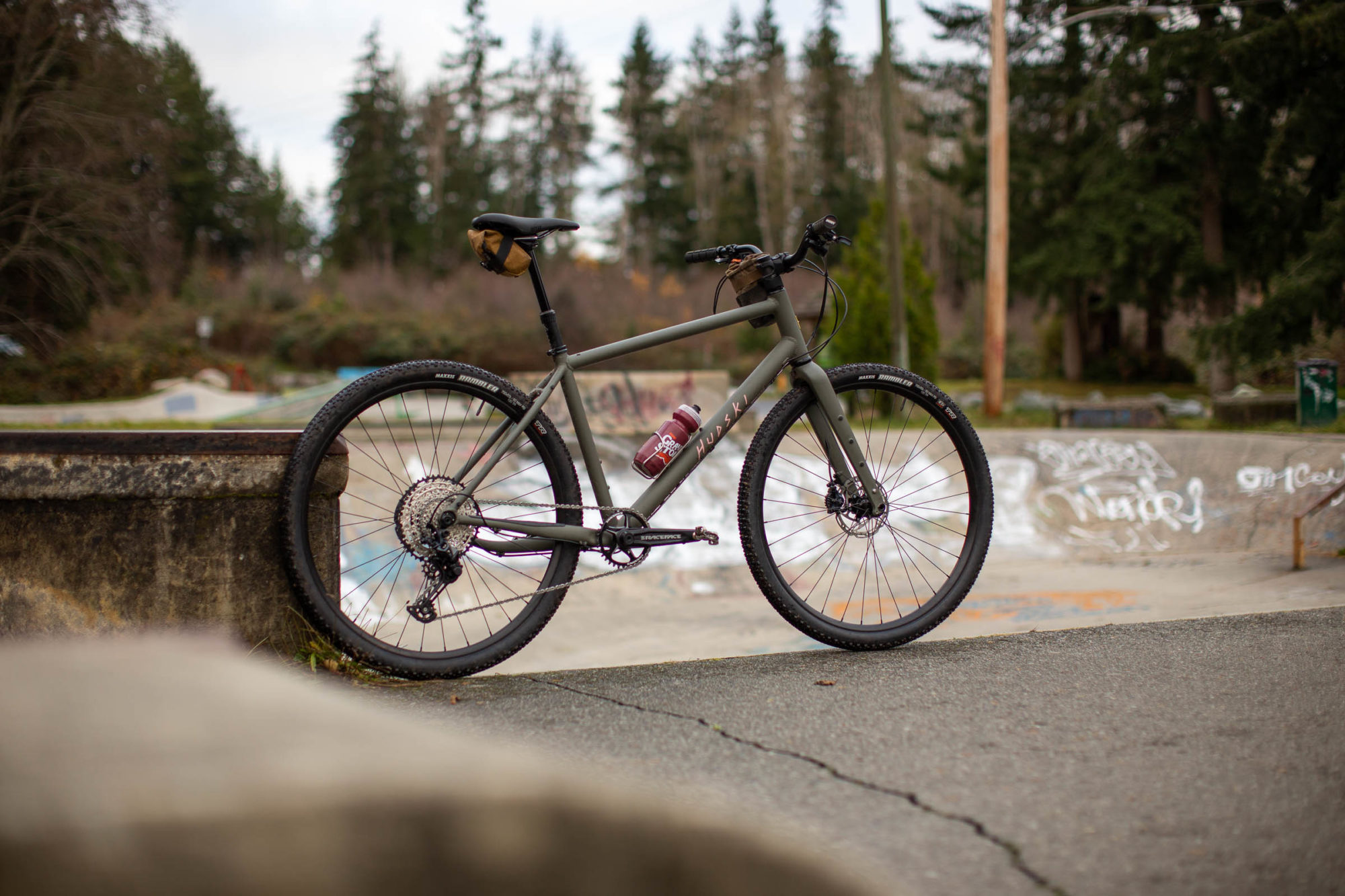
Although the Doggler may look like your average hybrid at first glance, there are a few key features that set it apart and contribute to its fun, do-everything demeanor. Its high bottom bracket was immediately noticeable and makes zipping around town, jumping off curbs, and taking a quick lap through the bike park feel natural and nearly reduced pedal strikes completely. On the other hand, the higher than average bottom bracket paired with a riser bar and fairly upright position makes it feel like a perch, with less of an “in bike” feel. The longer front end, short stem, and wide riser bars also give it enough of a mountain bike feel without being aggressive, which I think makes sense for anyone riding with traffic who could benefit from less twitchy handling and a stable platform. I’m also a huge fan of urban riding with a dropper post—it doesn’t take dirt trails and steep descents to benefit from getting your seat lower and out of the way.
The component selection, frame specs, and geometry all set the Doggler apart from most modern commuter / hybrid bikes. I’m fully expecting some of our readers to label the Doggler as “just an expensive hybrid” when first seeing it, but that’s not what it is. The Doggler is much more on trend with the recent surge of flat bar gravel bikes, like the Specialized Diverge EVO, which also comes with thru-axles, 1×12 gearing, a dropper post, and a nice selection of mounting options. However, the Doggler’s longer wheelbase and front end make for a more stable platform while hauling gear, and the uniquely high bottom bracket is a godsend while riding off road. Not to mention that is has more threaded bosses, a more refined fork, and what I believe to be a more polished component selection overall.
Doggler as a gravel bike
The Doggler really comes to life when it hits gravel. Unlike the recent flat bar gravel bike conversions we’ve seen, the Doggler isn’t a gravel bike and it’s not designed for drop bars. They aren’t repurposing a frame designed for one bar and mixing long stems and flat bars to make it work.
I found the wide bars, 700 x 50mm Maxxis Rambler tires, and 1×12 drivetrain hit a sweet spot for me while riding gravel roads and doubletrack around Powell River. Pair all of that with its lightweight build and it rolled relatively quickly, made butter out of gravel, and didn’t flinch at the idea of mixing in some singletrack. Cruising down loose descents was never a worry thanks to the Doggler’s wide bars and long front end, and although I’m confident a more traditional drop bar gravel bike would a faster option, that’s just fine by me.
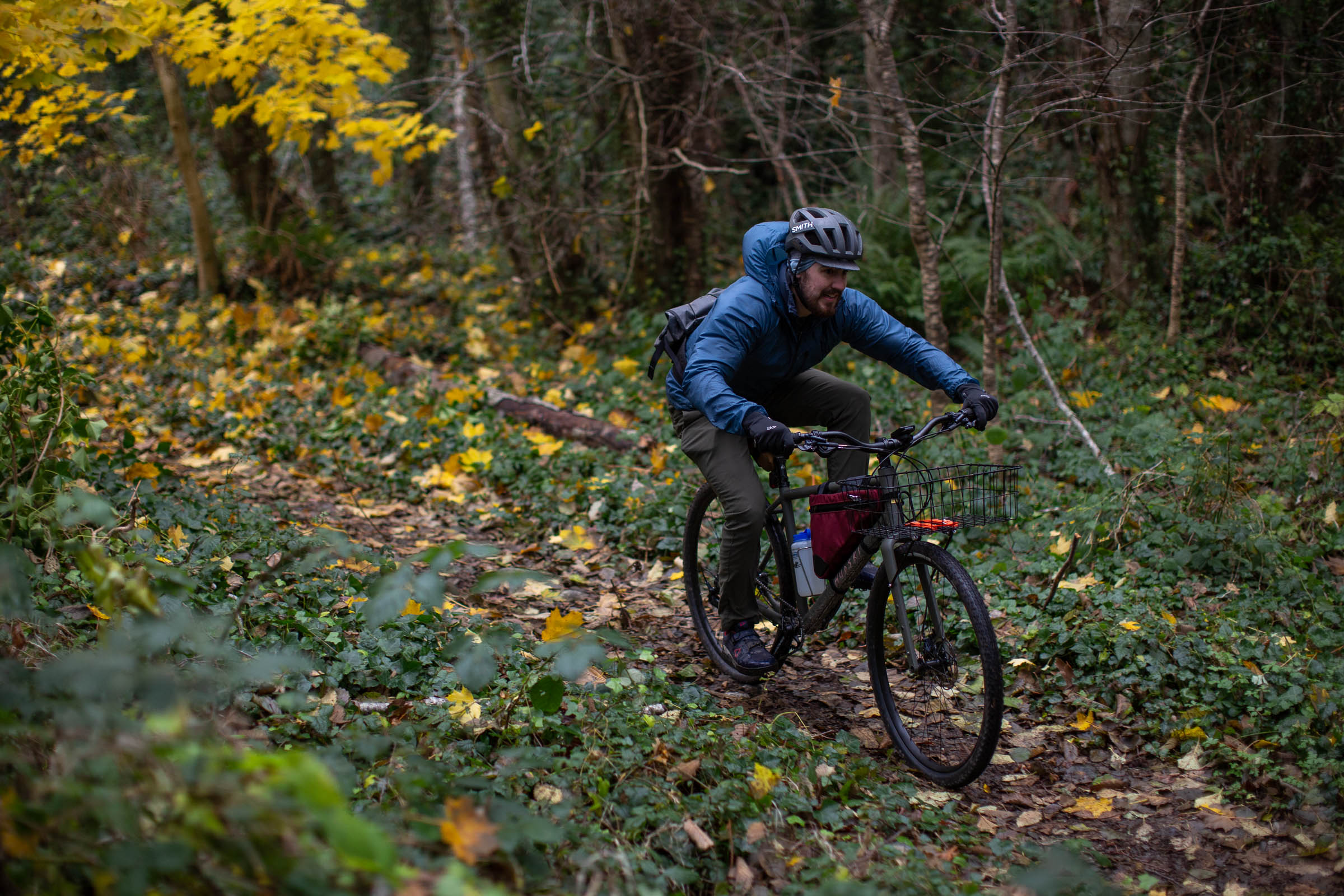
The Doggler isn’t alone as a flat-bar gravel bike. There have been some equally promising bikes introduced in the last year that fall into a similar category, including the Marin DSX, Specialized Diverge EVO, and Norco Search XR Flat Bar—all of which have sub-$2,000 price tags. Although they all share some similarities, the Doggler sets itself apart with more mountain bike-friendly specs like big tire clearance, wide bars, and a more versatile build. For those less interested in the mountain bike side of things and big 27.5″ tires, those three options are definitely worth checking out. Here’s a quick comparison to see how the latter two stack up against the Doggler, including some important geometry numbers and stem / handlebar specs.
| >Hudski VS Flat Bar Gravel Bikes | Doggler | Diverge | Search |
|---|---|---|---|
| Head Tube Angle | 69.2 | 70 | 70.5 |
| Seat Tube Angle | 73.2 | 73.5 | 73 |
| Bottom Bracket Drop | 57 | 85 | 70 |
| Wheelbase | 1164 | 1121 | 1099 |
| Front Centre | 710 | 703 | TBD |
| Chain Stay Length | 450 | 432 | 425 |
| Reach | 457 | 440 | 442 |
| Stack | 592 | 632 | 594 |
| Stem Length | 50 | 80 | 90 |
| Handlebar Width | 780 | 750 | 640 |
| Fork Length | 400 | 390 | TBD |
| Fork Offset | 44 | 69 | 49 |
Doggler as a mountain bike
As I mentioned in my introduction, Hudski also sent over their Mountain Doggler wheelset for me to try out. A quick rotor and cassette swap and I was back in business, but this time with some larger and chunkier Maxxis Rekon EXO 27.5 x 2.6″ tires. Even with the larger tires, there was around 0.5″ (~12mm) of clearance at the tightest spots for both the front and rear tires, which left room for extra dirt and mud. Just in time for our Good Night 2020 campout here in Powell River, I looked forward to the extra grip and added comfort afforded by bigger tires. The trails here are covered in roots and rocks, rarely smooth, and the winter adds an extra layer of coastal slipperiness that can flip mountain bikers horizontal in seconds.
As far as rigid aluminum mountain bikes go, the Doggler certainly holds its own. With the gravel wheelset swapped out for some wider and more grippy rubber, the actual ride feel remained familiar, but the benefits of plus-sized tires was immediately noticeable out on the trails. I loaded the Doggler down quite heavily with winter camping gear on our overnighter, much of that weight up front in my Microwave Panniers, and I was surprised and how well it handled. Getting the front wheel off the ground, or picking up the bike for that matter, was much more difficult, but the higher volume tires and balanced handling allowed me to pick through some technical trails and ride some slabs with only a hint of hesitation. As a final test, I sent Justin from TAWS Bike Garage down some technical lines on Mount Mahoney (see photos below, orange jacket), and he’s still alive to tell the tale today.
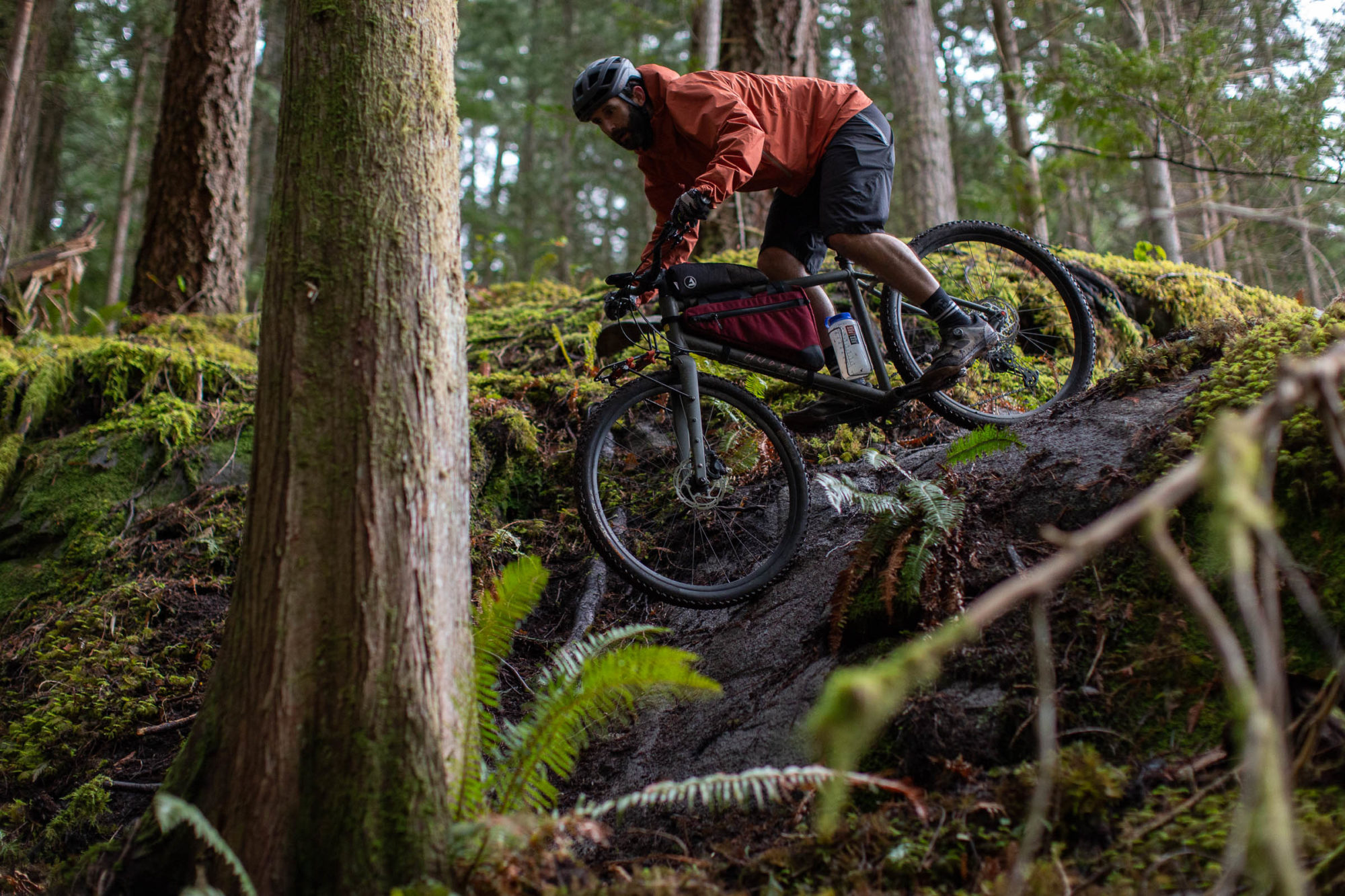
In mountain bike mode, the Doggler reminded me of my first urban cruise on it in city mode, and I mean that in the best way. All things considered, it was the same bike I explored paved and gravel roads with, doubletrack, paths, the local bike park, and trips into town to visit some favourite spots like 32 Lakes Cafe and Bakery and TAWS Bike Garage. It’s a blend of a lot of well-thought-out features that add up to an incredibly well-rounded bike that can be used in many different ways. In some ways it’s like a kids bike—it just works.
The long front end, short stem, wide bars, and high bottom bracket coupled with a reliable build and dropper post makes for a pretty capable mountain bike. Even if bikepacking isn’t your top priority, it doesn’t lean too hard in any direction to be good at one thing and bad at another. The one gripe I have with the mountain bike build is that the actual wheelset is a unicorn of sorts. Finding a non-boost wheelset with a Shimano Microspline freehub and 30mm internal width is nearly impossible, and I really think Hudski should offer an additional complete wheelset (either gravel or mountain) for those looking to swap back and forth.
I asked Hudski where the Doggler fits in amongst modern hybrids, rigid mountain bikes, and gravel bikes and this is what they had to say:
“Modern hybrid geo can end up all over the place. I feel like they’re the least thought about bikes in the industry, although probably the most sold. In general, they lack in the reach and slacker HT angle department. Rigid mountain bikes are a good comparison but they’ll usually have suspension-corrected forks, which in our findings, increased the floppy steering feeling. They tend to have a lower BB as well, and they often fall into the “traditional” geometry category where long reach hasn’t been completely realized unless it’s a custom frame build. Gravel bikes tend to have a mostly road-oriented riding position that’s not ideal for moving the body around on the bike, they typically have a lower BB, and can get caught up on sniper rocks. For the Doggler, we kept the seat tube angle in a gravel-bike-like position for efficiency. You could sum it up as: hybrid chill, mountain bike shred, gravel bike efficiency.”– Brian Szykowny, Co-founder/Co-designer at Hudski
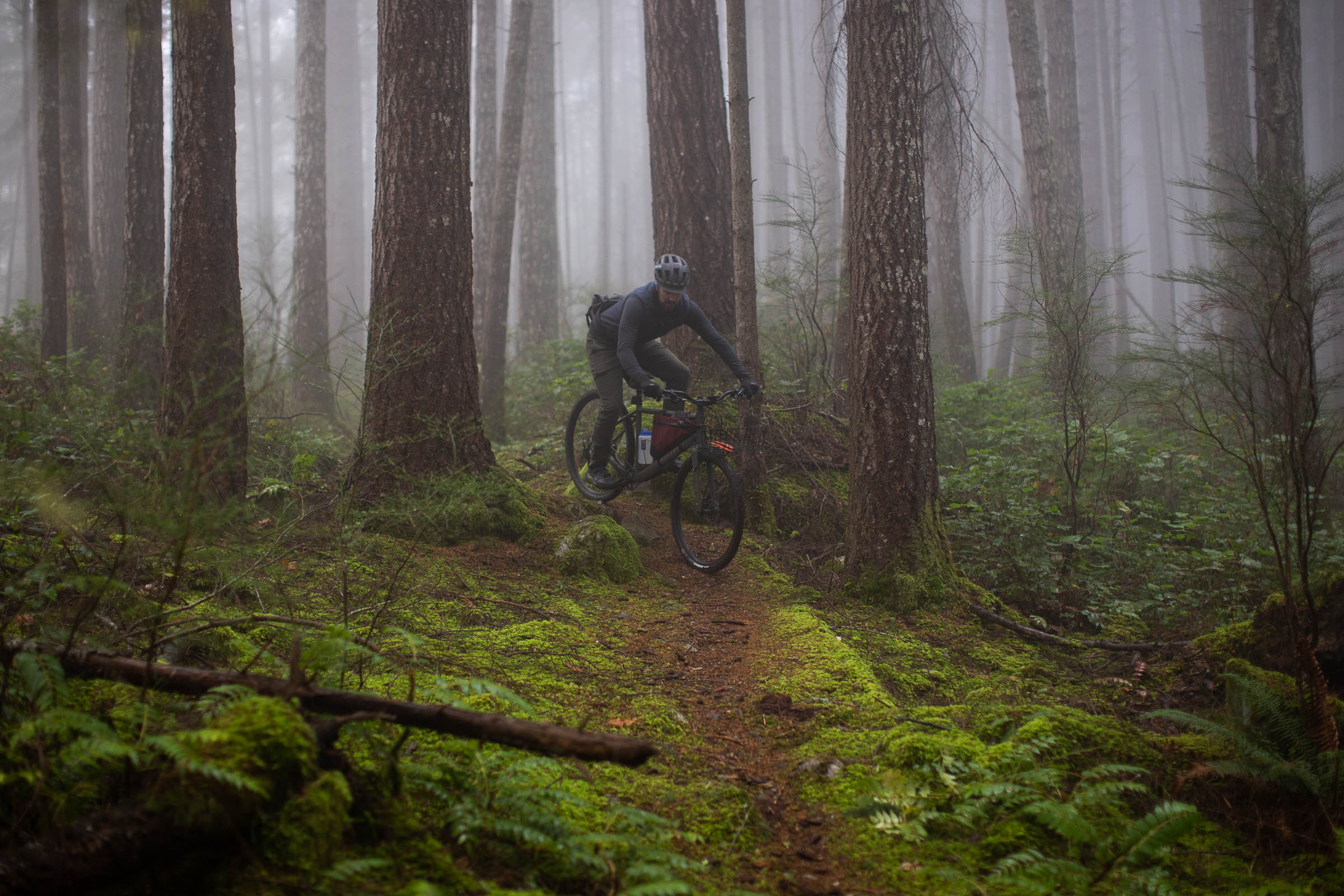
Bikepacking and Beyond
A lot of what I’ve mentioned up to now makes the Hudski Doggler a good option for bikepacking. As long as you’re not dead-set on riding the Colorado Trail or taking laps at your local jump park, there’s a good chance the Doggler can make it happen. It’s great to see triple pack, rack, and fender mounts on their carbon fork, which makes it easy to mount a cargo cage for extra gear or water or to give basketpacking a go. I also appreciate the generously sized main triangle, which fits Road Runner Bags’ Wedge Mountain Full Frame Bag nearly perfectly and left room for a Widefoot LiterCage on the seat tube for all my hydration needs. The long top tube also allowed me to run my JPaks Footlong Top Tube Bag, which has become a personal favourite on long rides. The specific component selection (12-speed, dropper post, hydraulic brakes, thru-axles) is a sure sign that this isn’t just a fancy hybrid, even if it looks that way. Plus, it’s a great example of how far modern aluminum bikes have come over the years.
Could you recreate something similar to the Doggler for less money? Definitely. Actually, my friend Justin at TAWS Bike Garage picked up a steel Kona Dr Dew to do just that. All he did was swap the narrow bars for something much wider and he had something that loosely resembled the City Doggler. As a bikepacking rig, it wouldn’t be as simple, as the frame specs and component selection are actually quite unique.
So, what does the Doggler do best? I enjoyed the gravel build the most. Depending on what gravel means to you, I think that’s where it really makes the most sense. It’s never going to replace a proper hardtail mountain bike with 130-140mm of suspension, and for some of the speedier gravel riders, it might not be fast or aggressive enough. Experienced mountain bikers will push the Doggler far beyond gravel roads and bike paths, and it’s up for that, but newer riders will need some time to develop their skills to unlock its full capabilities.
Pros
- Aesthetics and overall look are dialled
- Build kit leaves little to be desired
- Mounts galore!
- Thru-axles, threaded bottom bracket, and great tire clearance
- Balanced ride feel that’s versatile and comfortable
Cons
- Direct to consumer means it might be hard to get outside of the US
- Expensive, depending on what you’re comparing it to
- Mountain wheelset specs aren’t common
- Size Tested: Large
- Actual Weight: 25.8 pounds (11.7kg) with XT M8000 pedals / MTB wheels
- Place of Manufacture: Taiwan
- Price: $1,999 USD
- Manufacturer’s Details: HudskiBikes.com
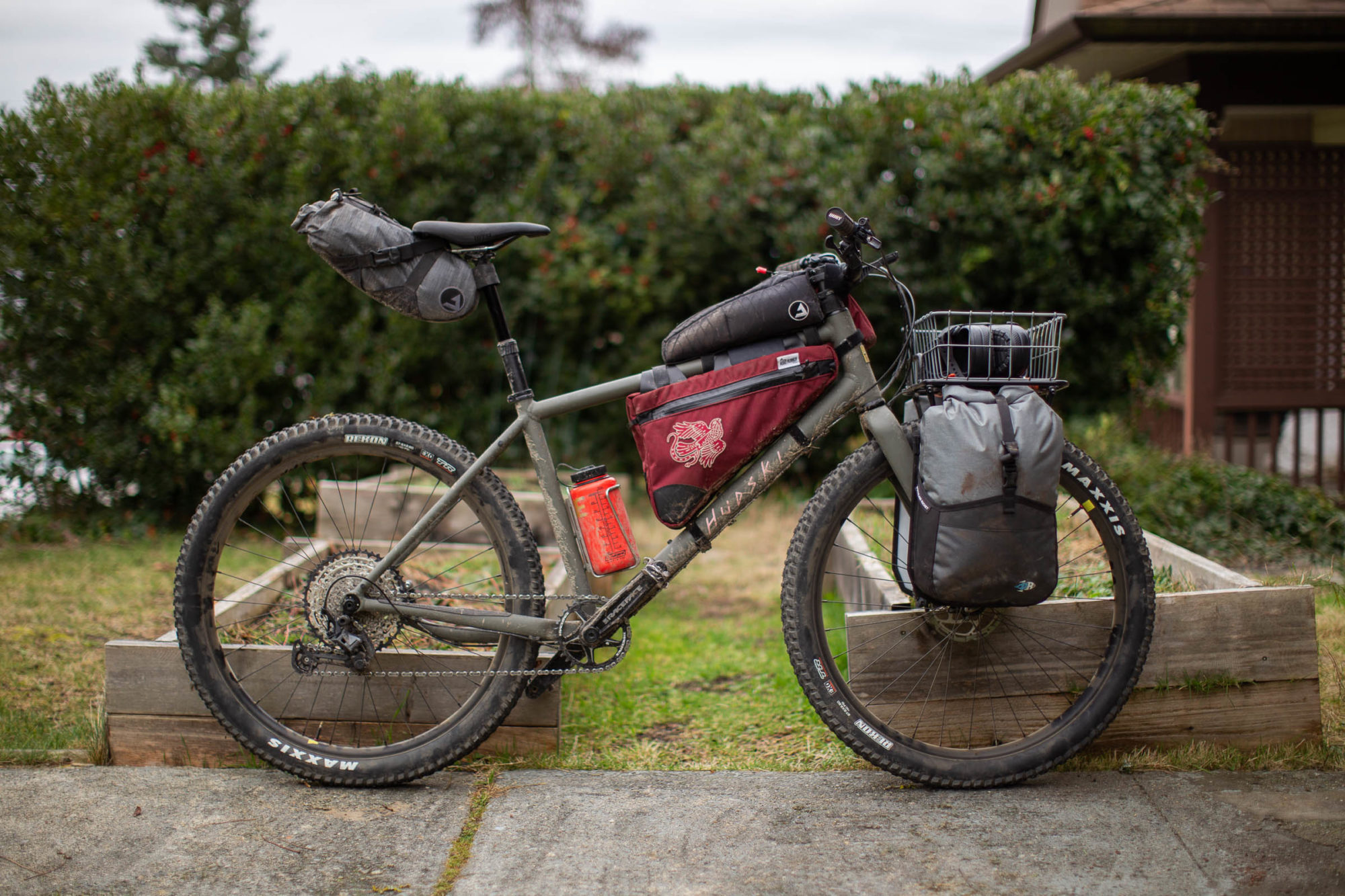
Wrap Up
If you haven’t figured it by now, I’m a huge fan of the Hudski Doggler. It’s the most impressive commuter and gravel bike I’ve ridden. And although it wouldn’t take the place of a dedicated mountain bike with front suspension and more rowdy geometry, it can hold its own and experienced riders will have loads of fun riding more technical trails on it. Personally, I’ve enjoyed the more relaxed geometry and resulting riding position, which has allowed me to keep my head up and take in my new home in Powell River.
Still, the Hudski Doggler isn’t cheap. For less than its $2,000 price tag, you can pick up a hardtail like the Kona Unit X or Salsa Timberjack, both of which would perform better on singletrack, steep descents, and rough terrain. Or you could go the other route and pick up a mid-range commuter or entry-level gravel bike if the plan is to stick to smooth trails and gravel roads. However, if you want all of the above and don’t primarily ride high-speed chunky singletrack but appreciate specs like thru-axles, a wide-range 12-speed drivetrain, and a better performing component group, the Hudski Doggler starts to make a lot of sense.
In some ways, I see the Doggler as a grown-up interpretation of what bikes mean to kids. From my time spent working in bike shops, I know it’s more or less a matter of finding the right size and picking a colour. A small wicker basket for the commuter kid, multi-colour streamers for the dreamers, and a matching bell to boot. The one riding it ultimately determines what type of bike it is, and the simplicity in that is a beautiful thing.
Please keep the conversation civil, constructive, and inclusive, or your comment will be removed.







